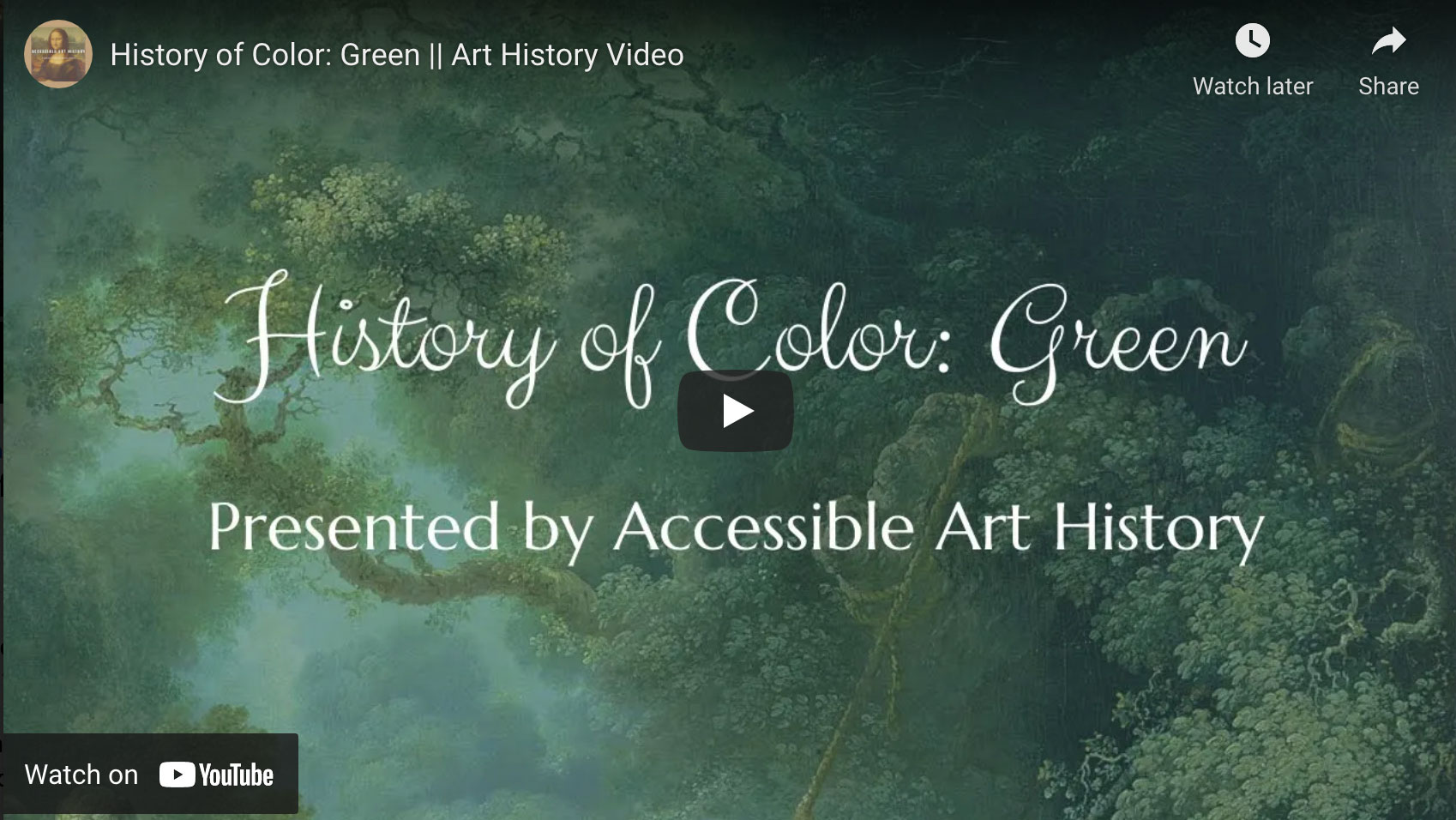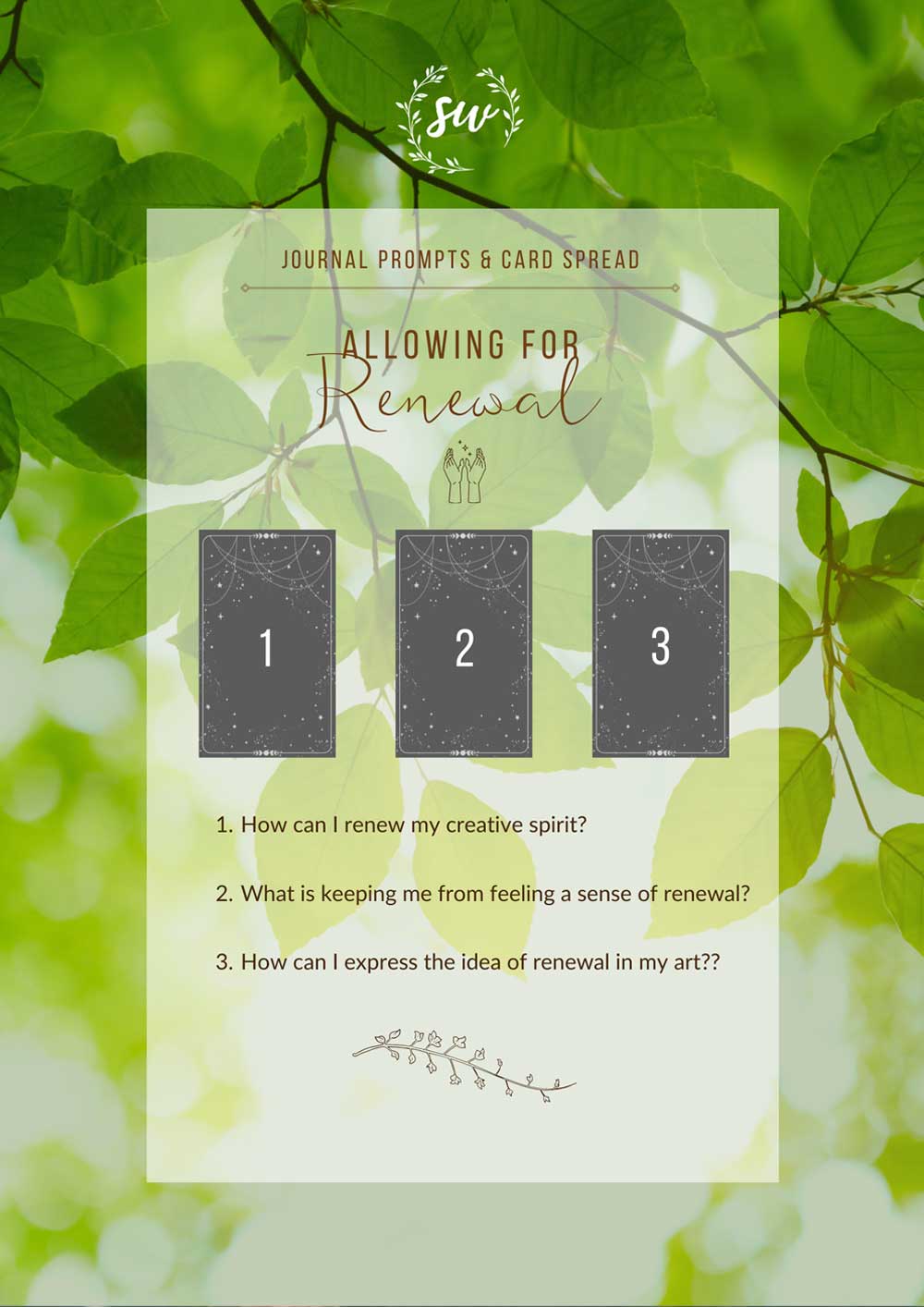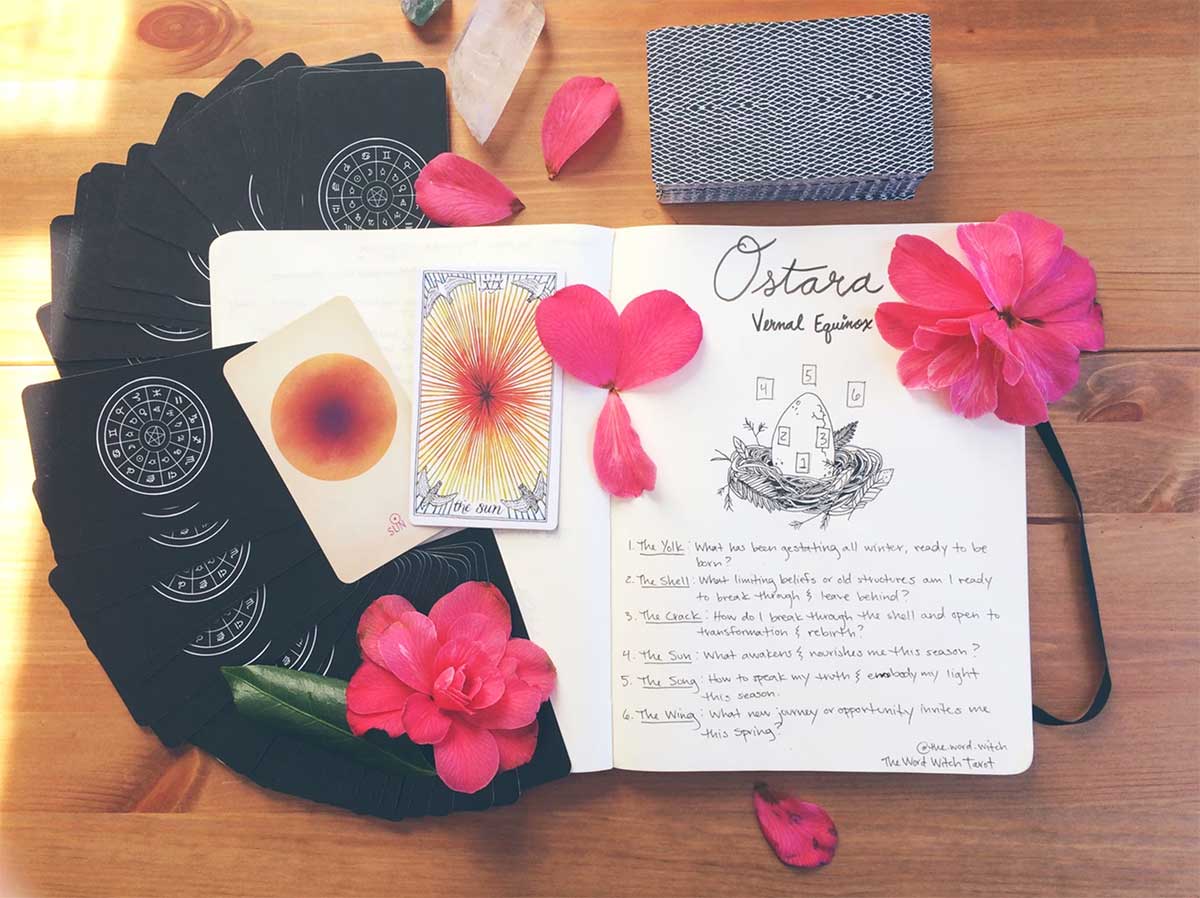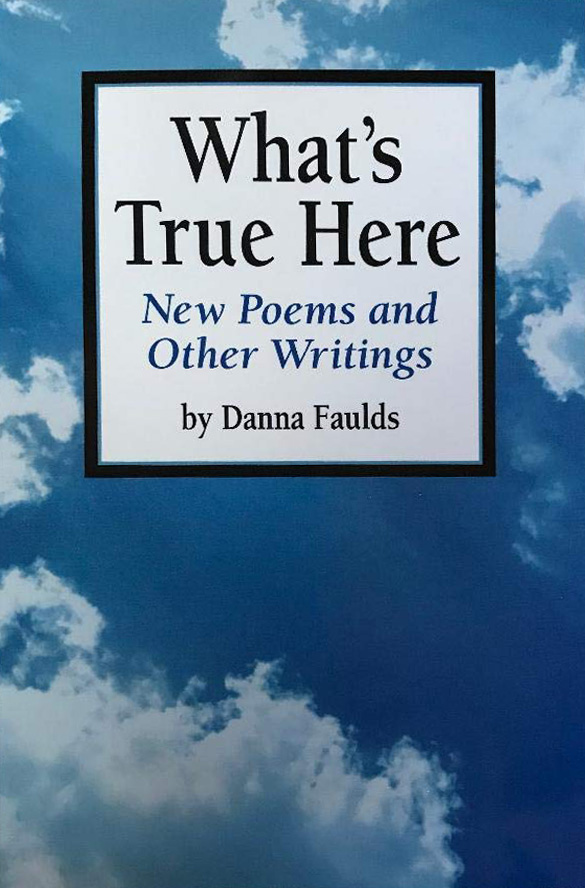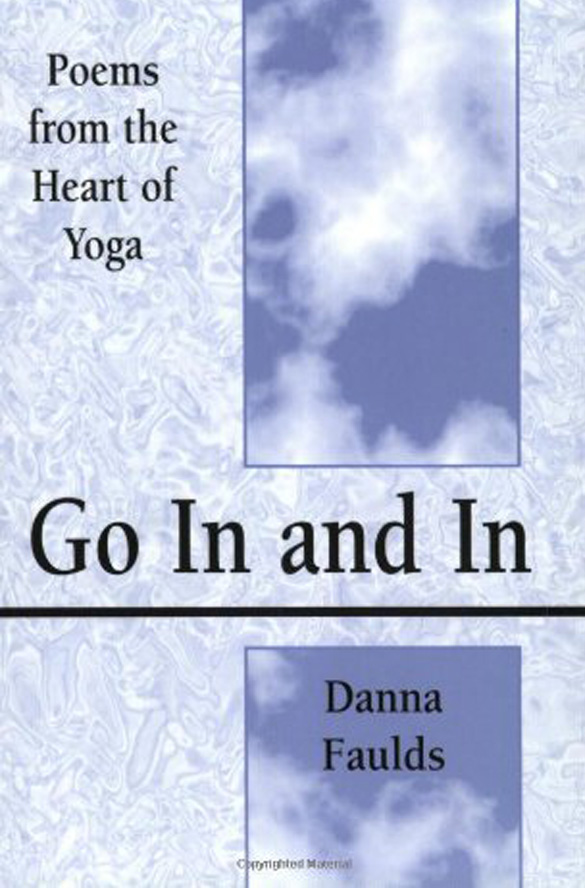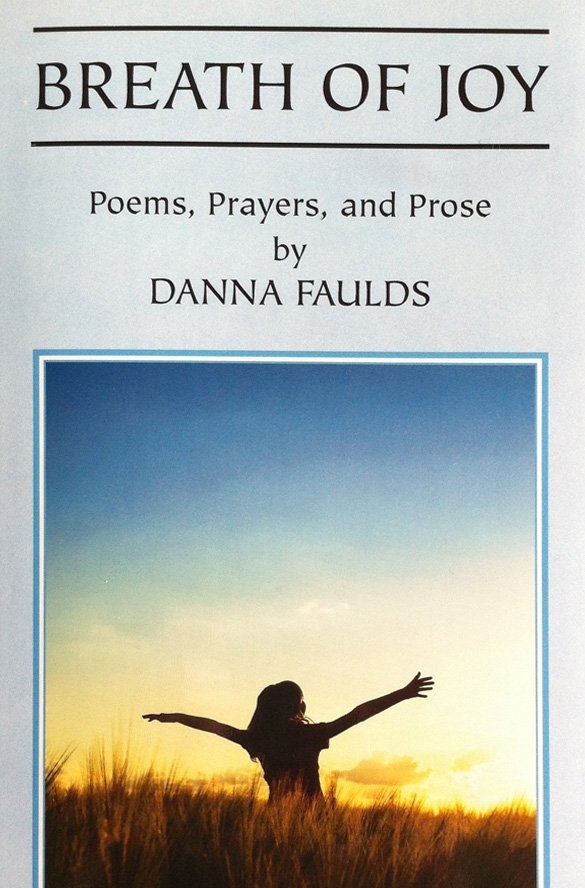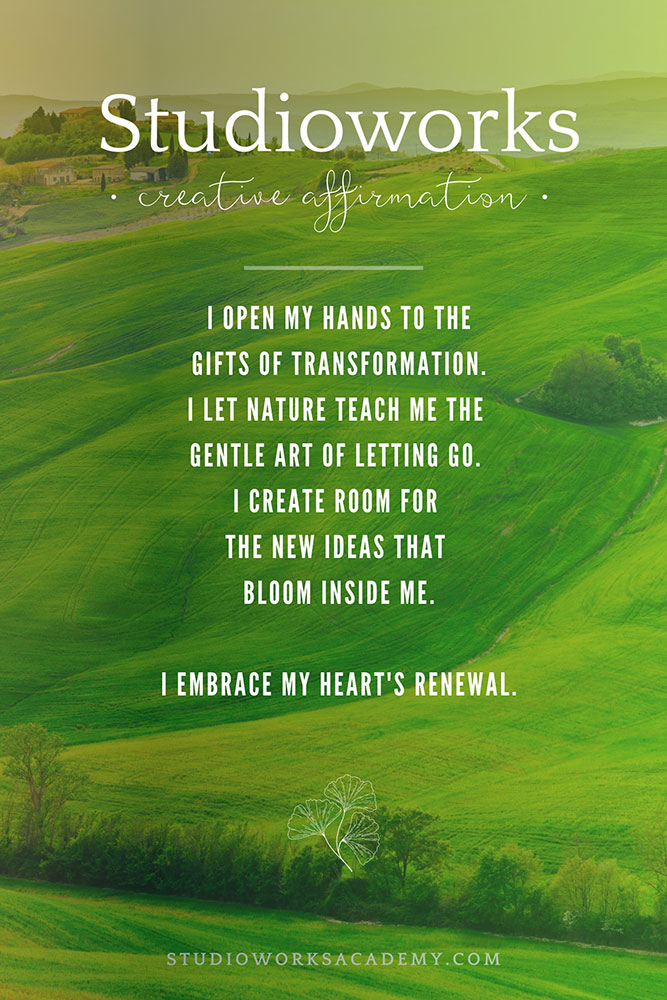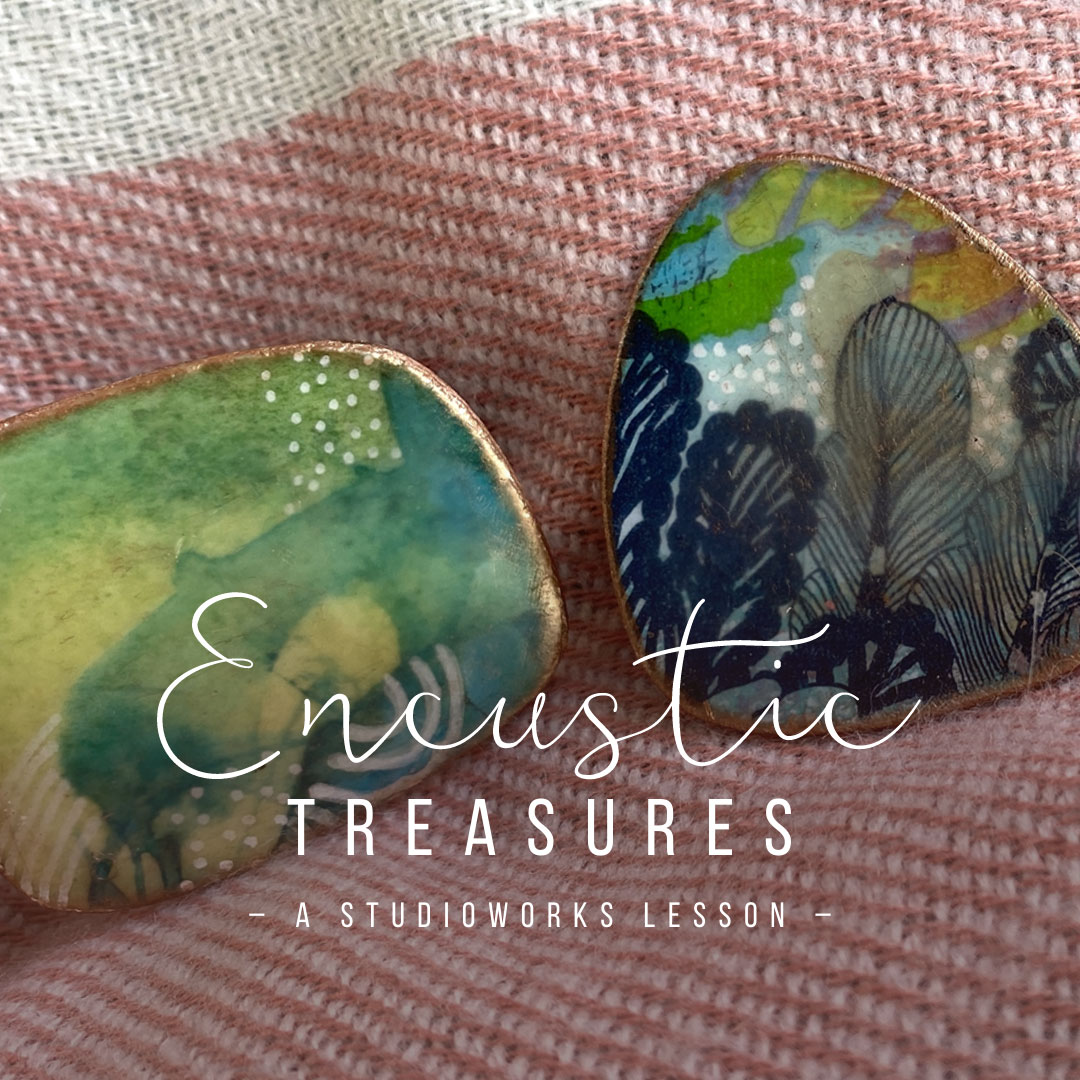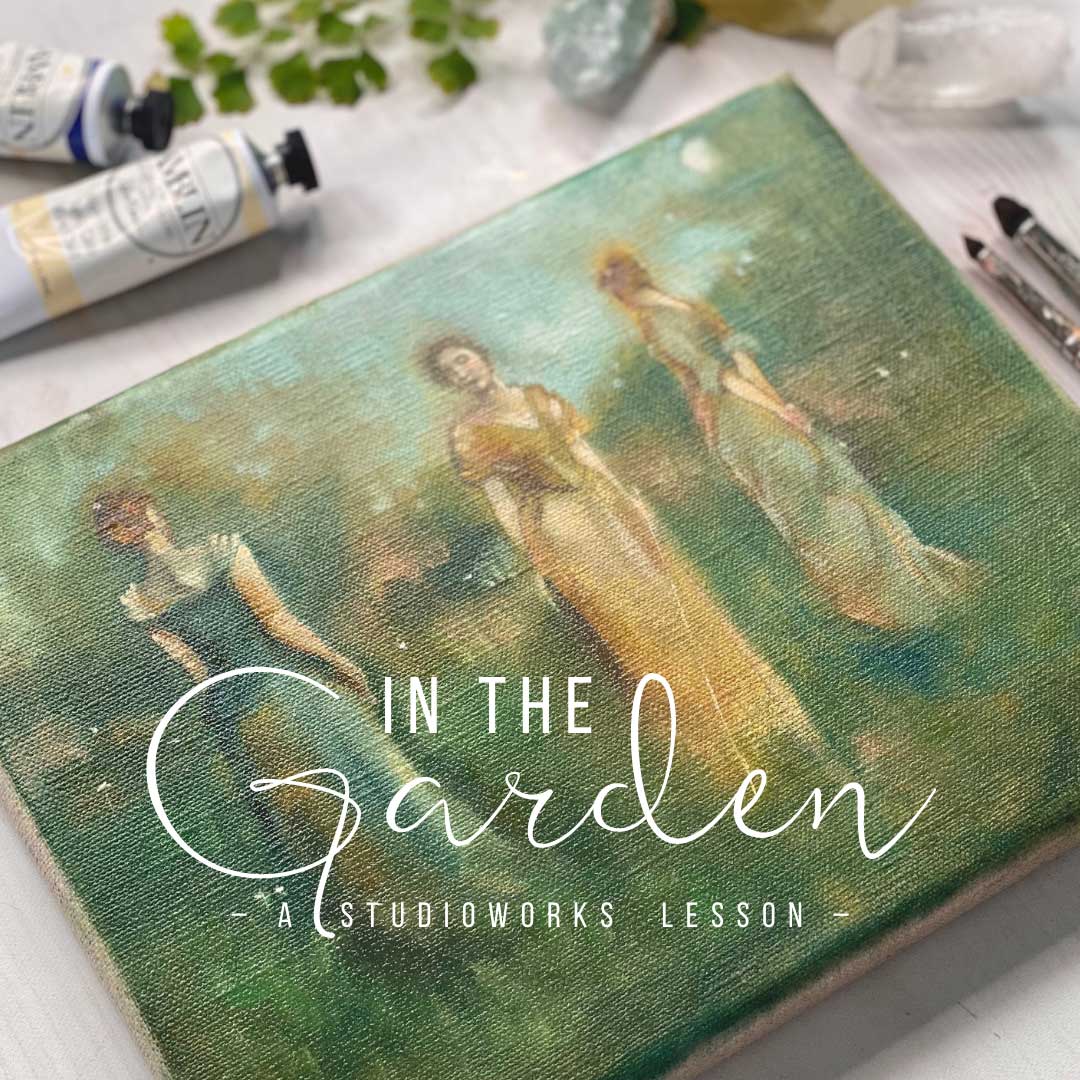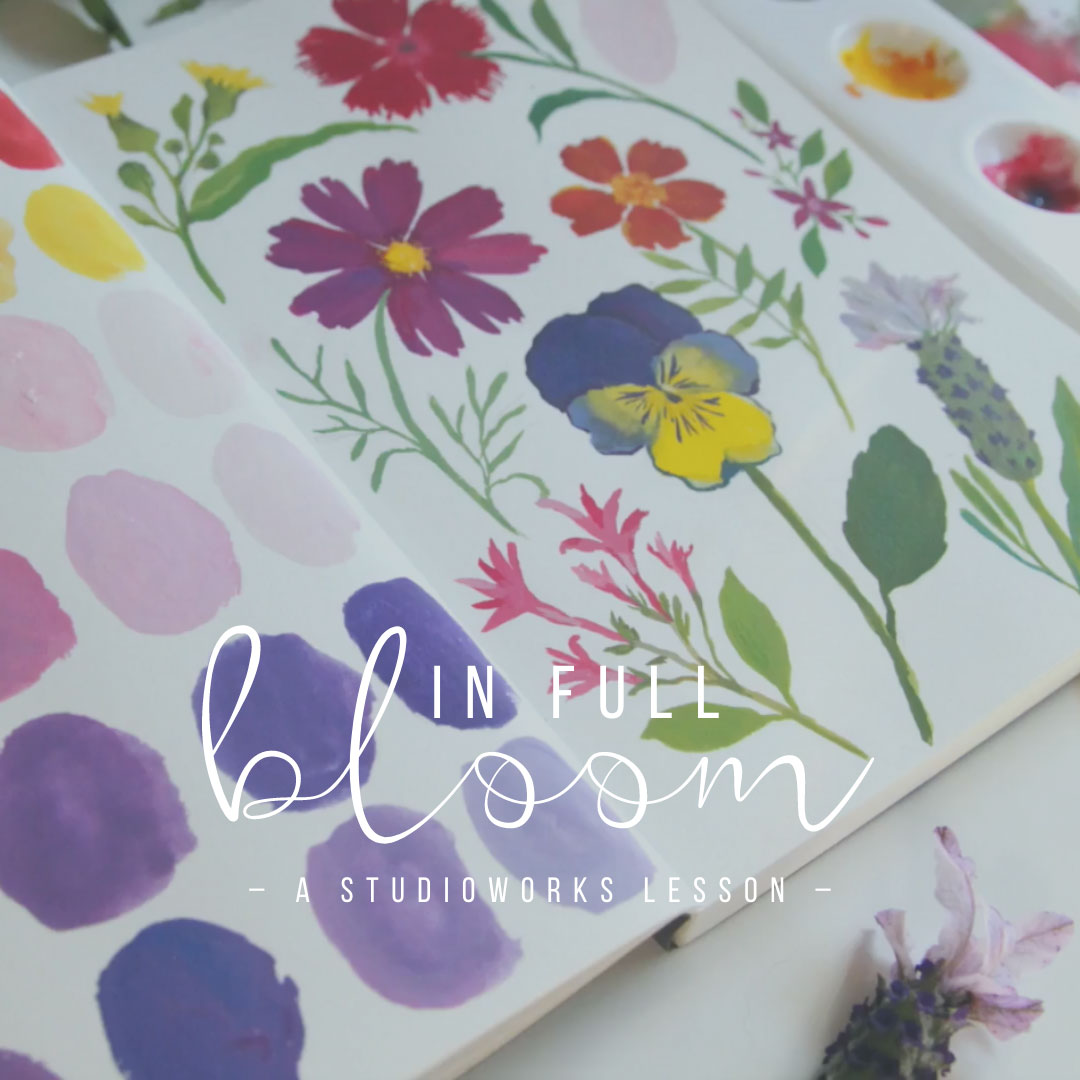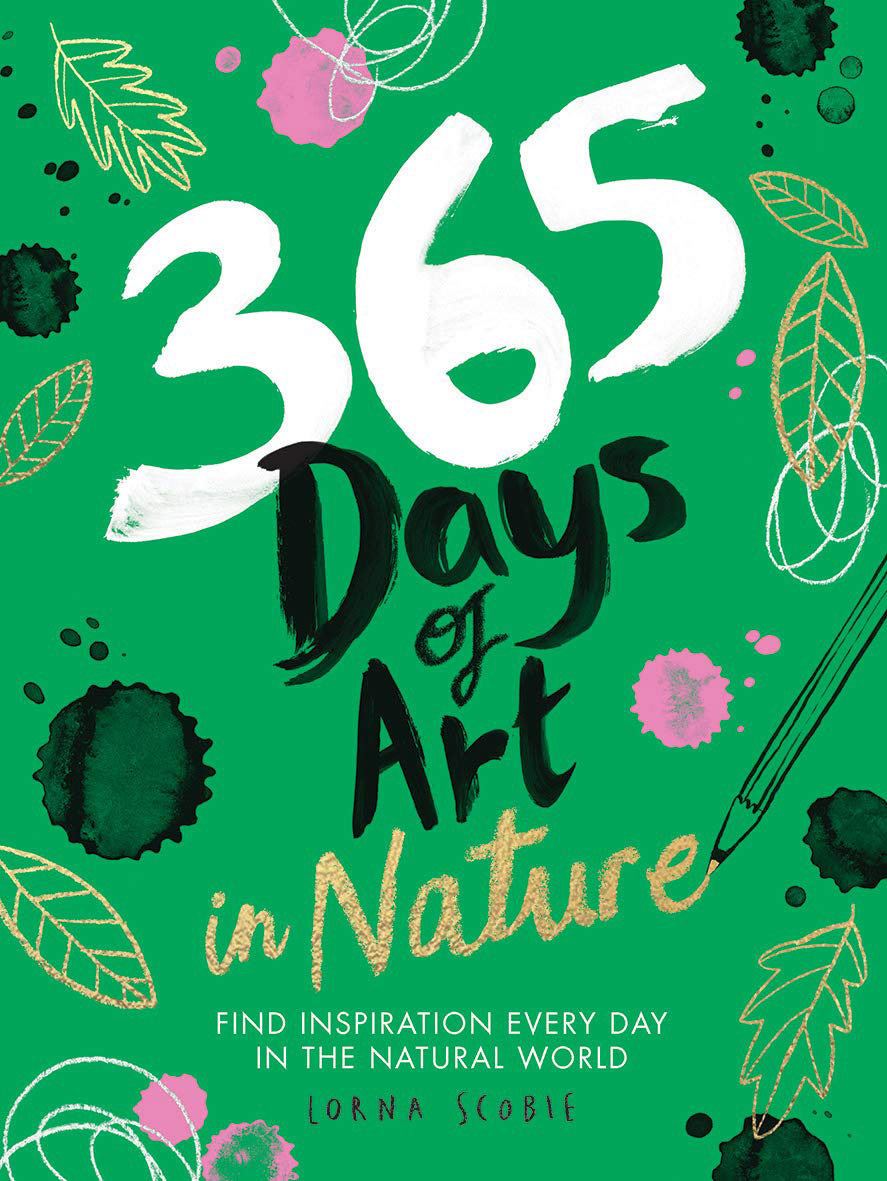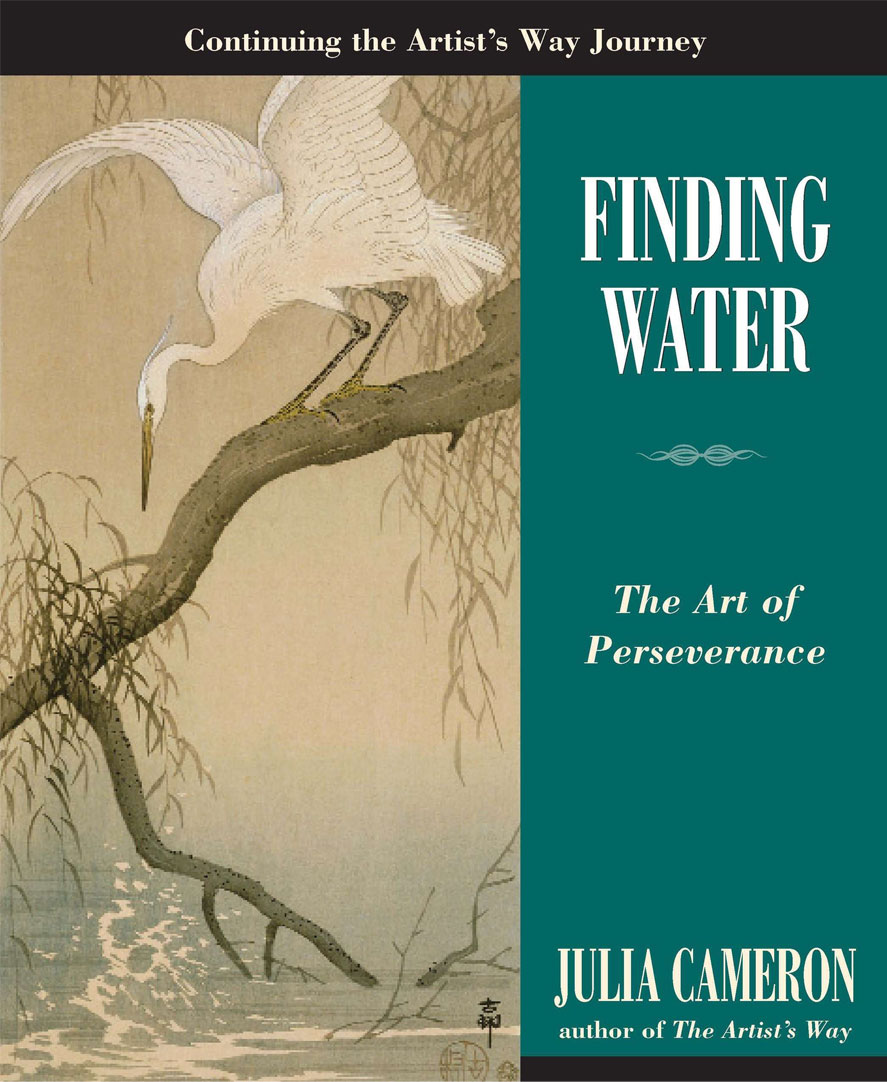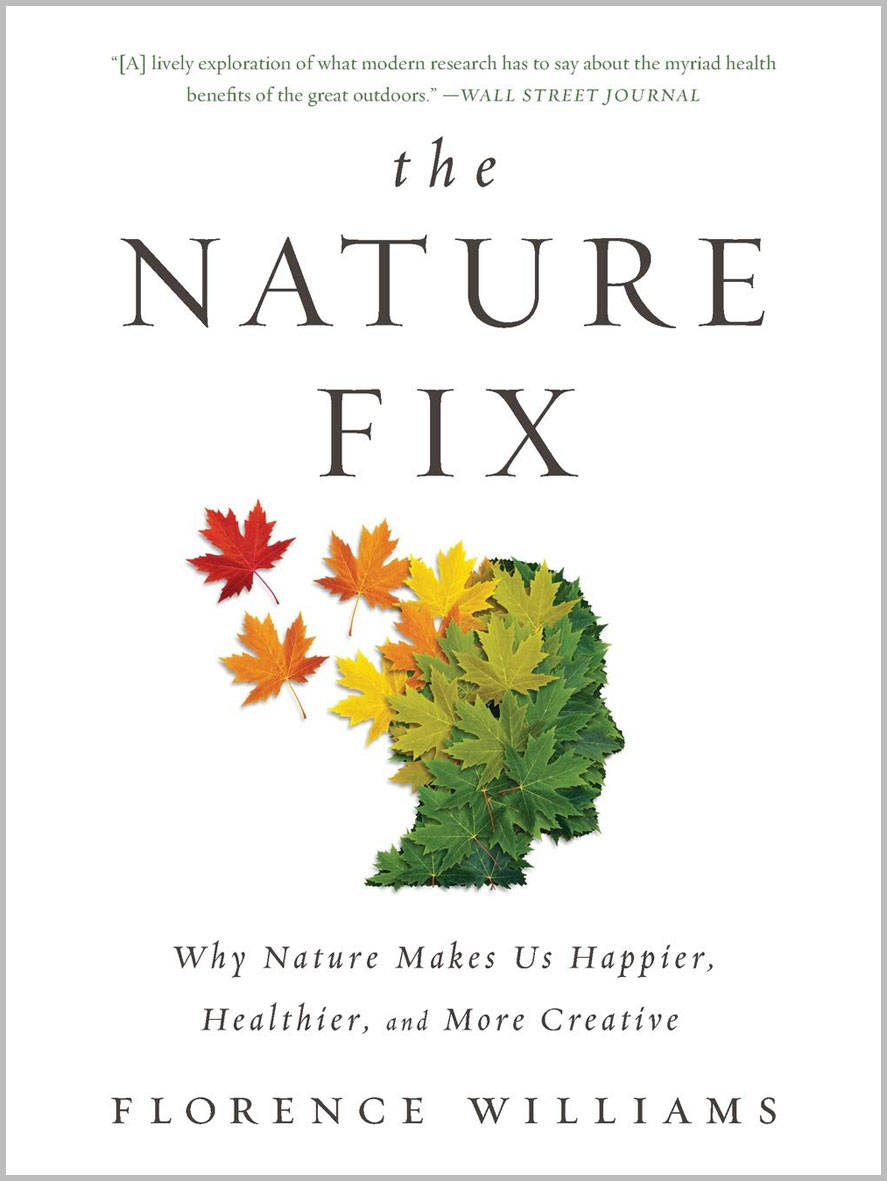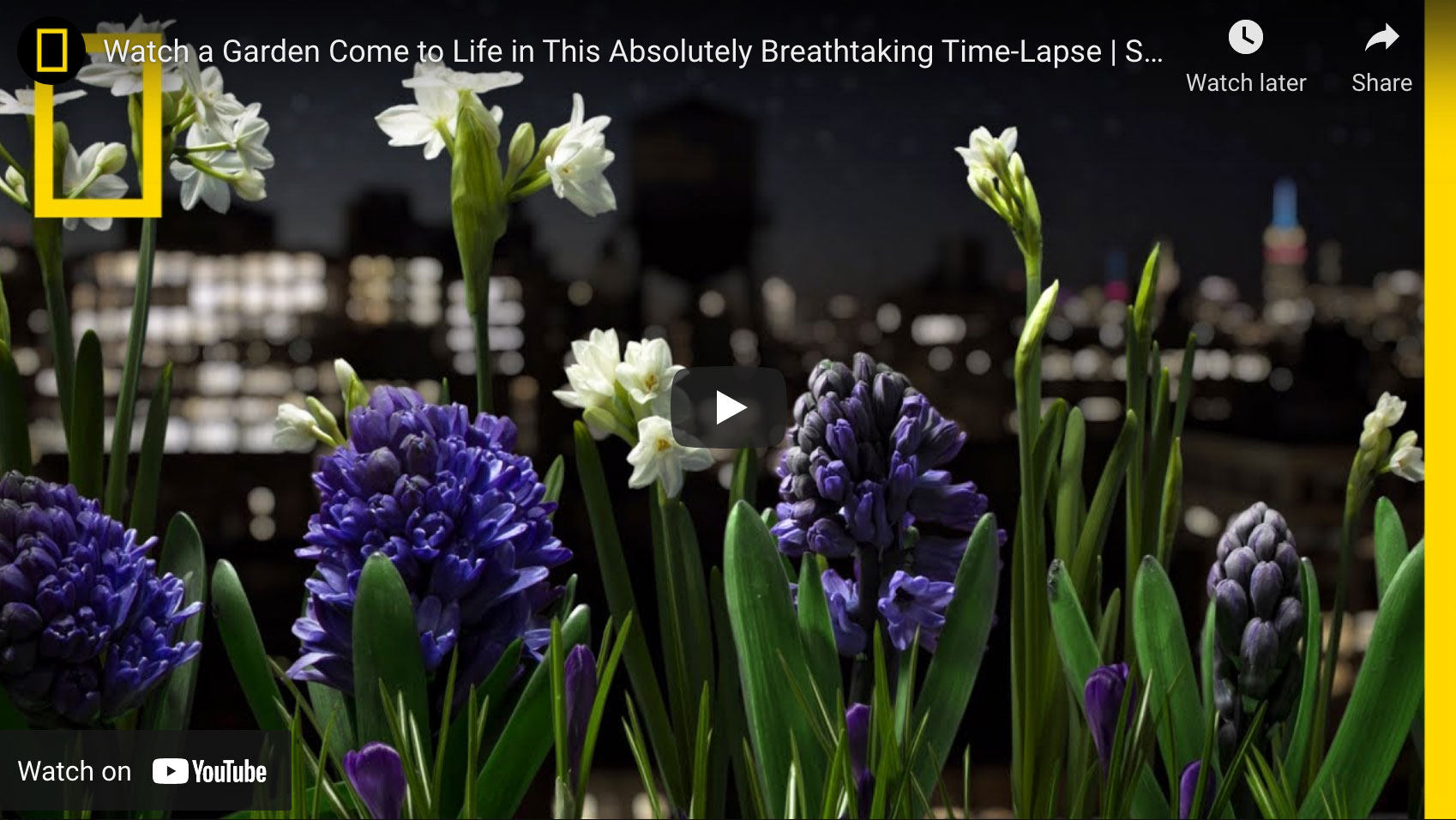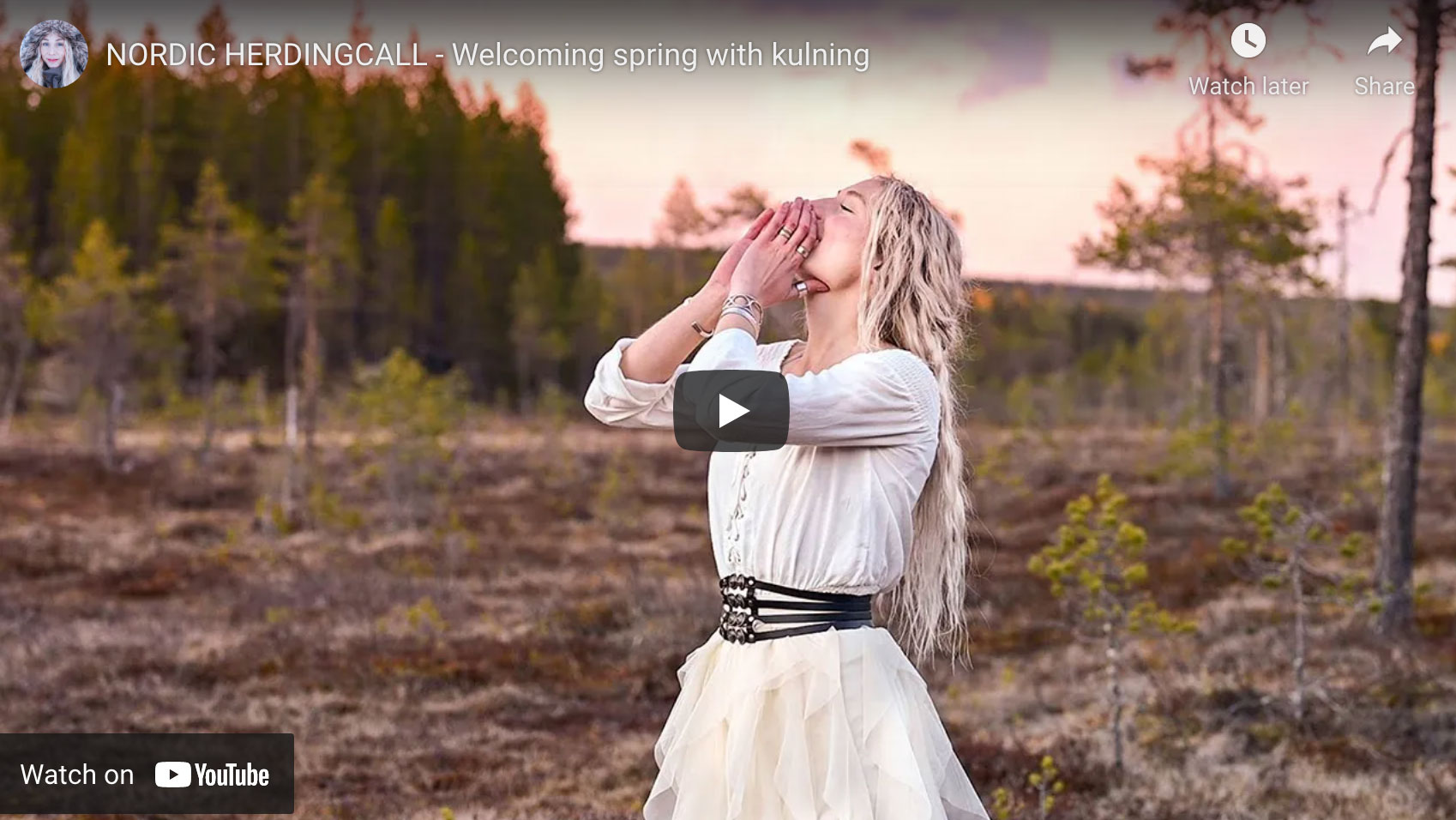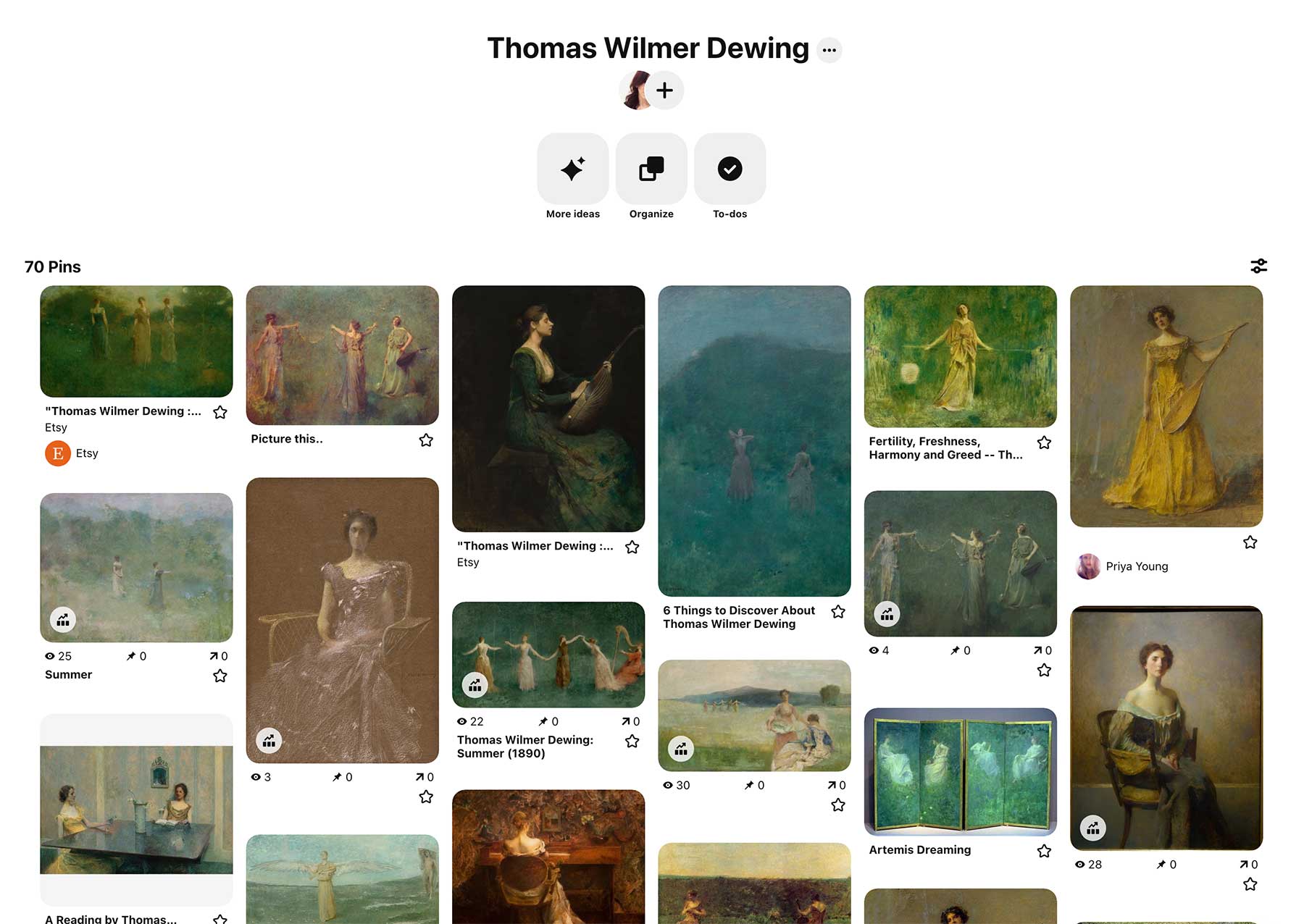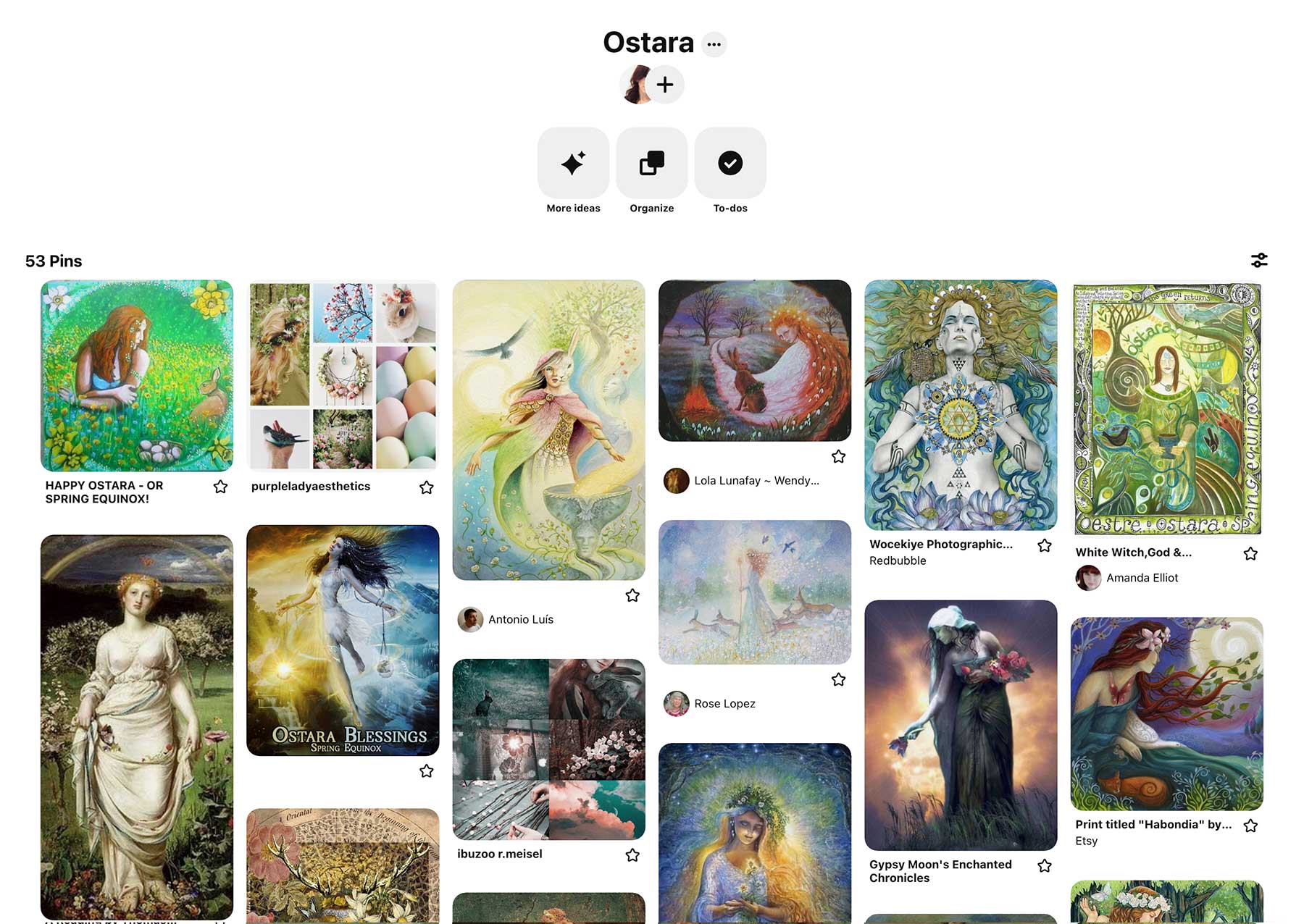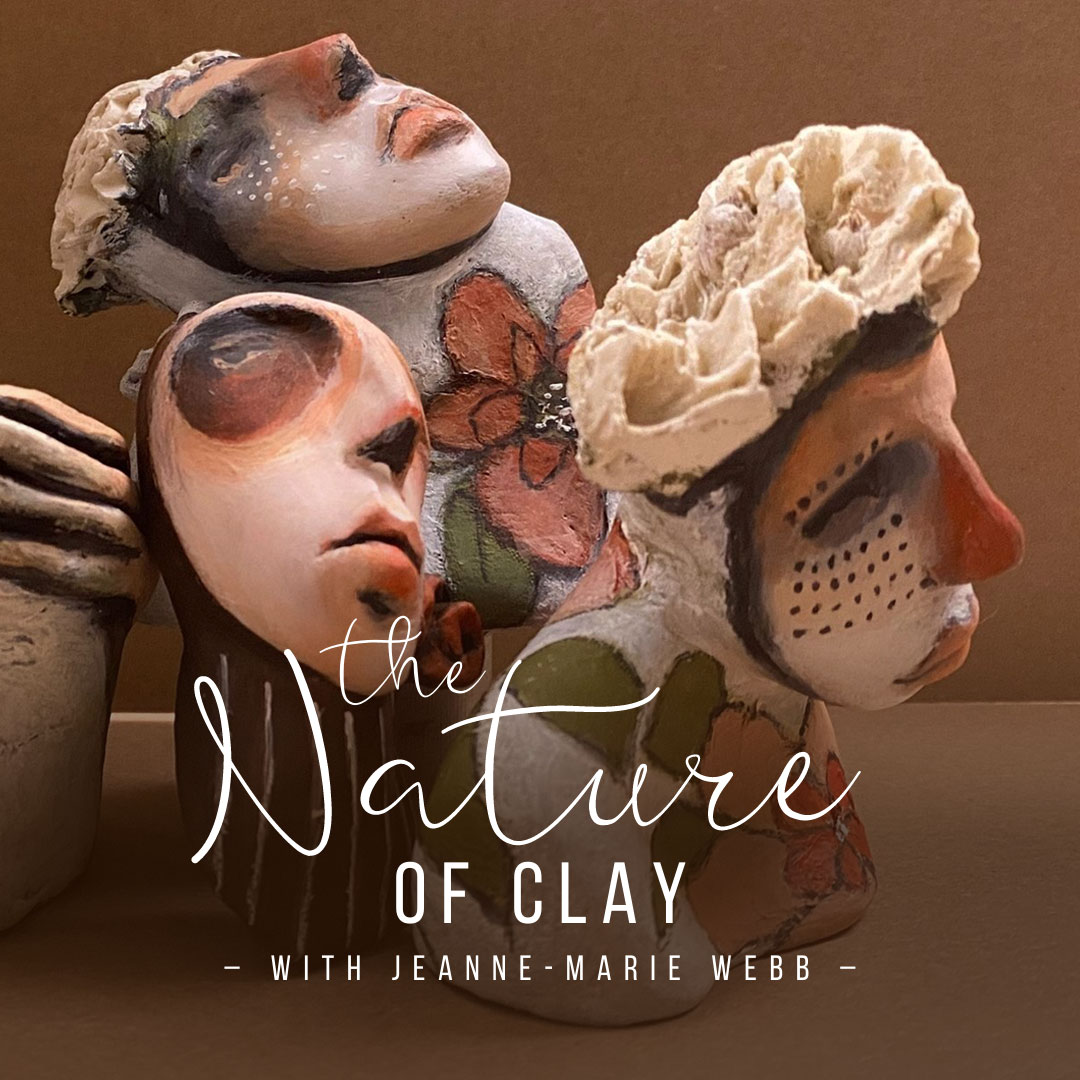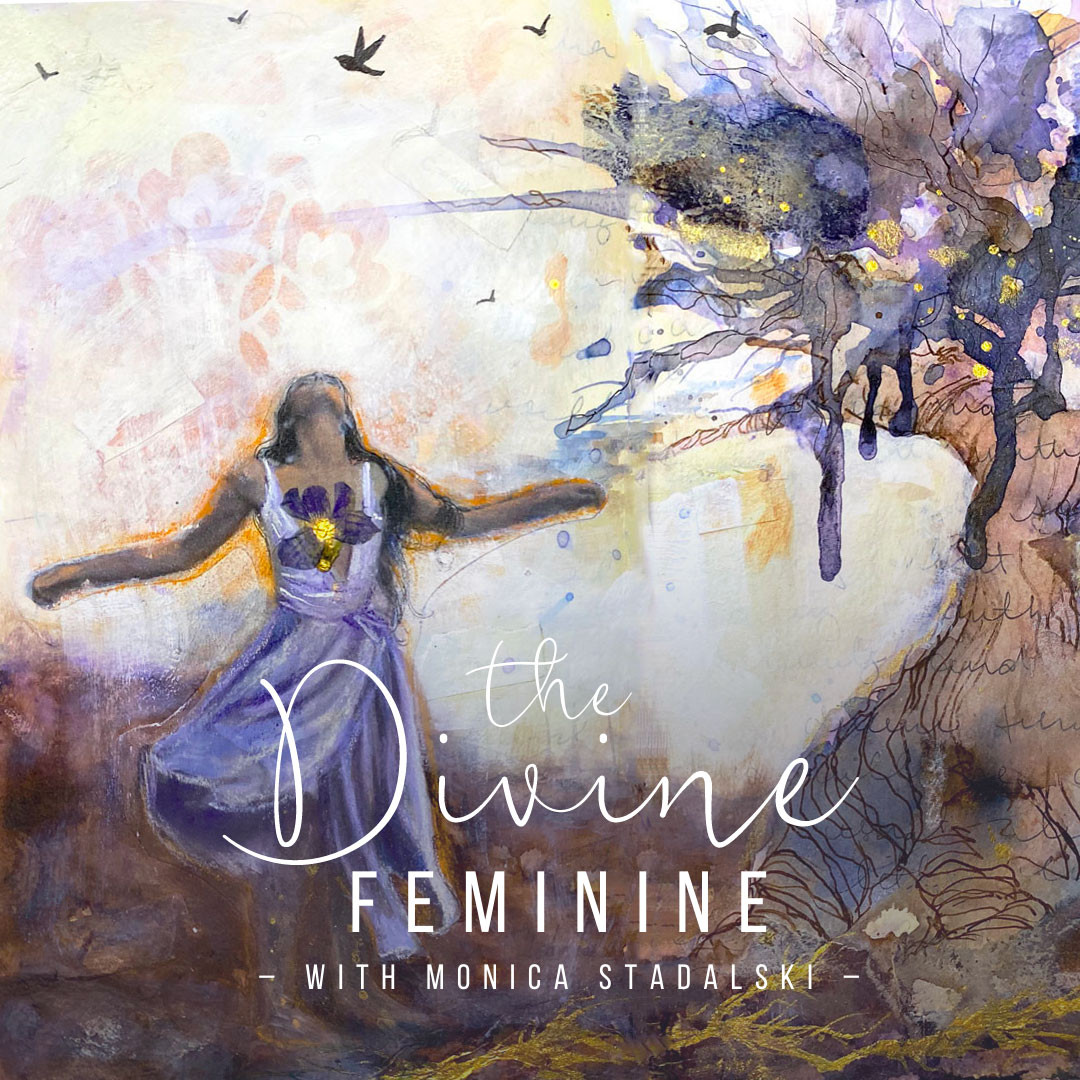IVY NEWPORT
Studioworks
Journal
a letter from ivy
Dear creative friends,
Welcome to Issue #39 of the Studioworks Journal! As always, I’m delighted you are here with me and I’m excited to share this with you. So, this month, I found myself being drawn back to nature. Us Artists are never too far from Gaia’s embrace are we? We so often find ourselves being drawn into the forest, pulled to oceans, lakes and streams where the beauty and majesty of nature is undeniable. We can be found gazing up to the stars or watching the sun slip below the horizon, if only to witness the colors, the changing of the light. So, as we shift our seasons again let us be renewed by Nature and all she has to offer.
We will explore the stories of sacred wells, the history and symbolism of the color green, an introduction to the goddess Ostara and a lovely study of American symbolist and tonalist painter, Thomas Wilmer Dewing and more. Gather your sketchbook, your open heart and a keen eye and let’s wander into the woods together.
xo,

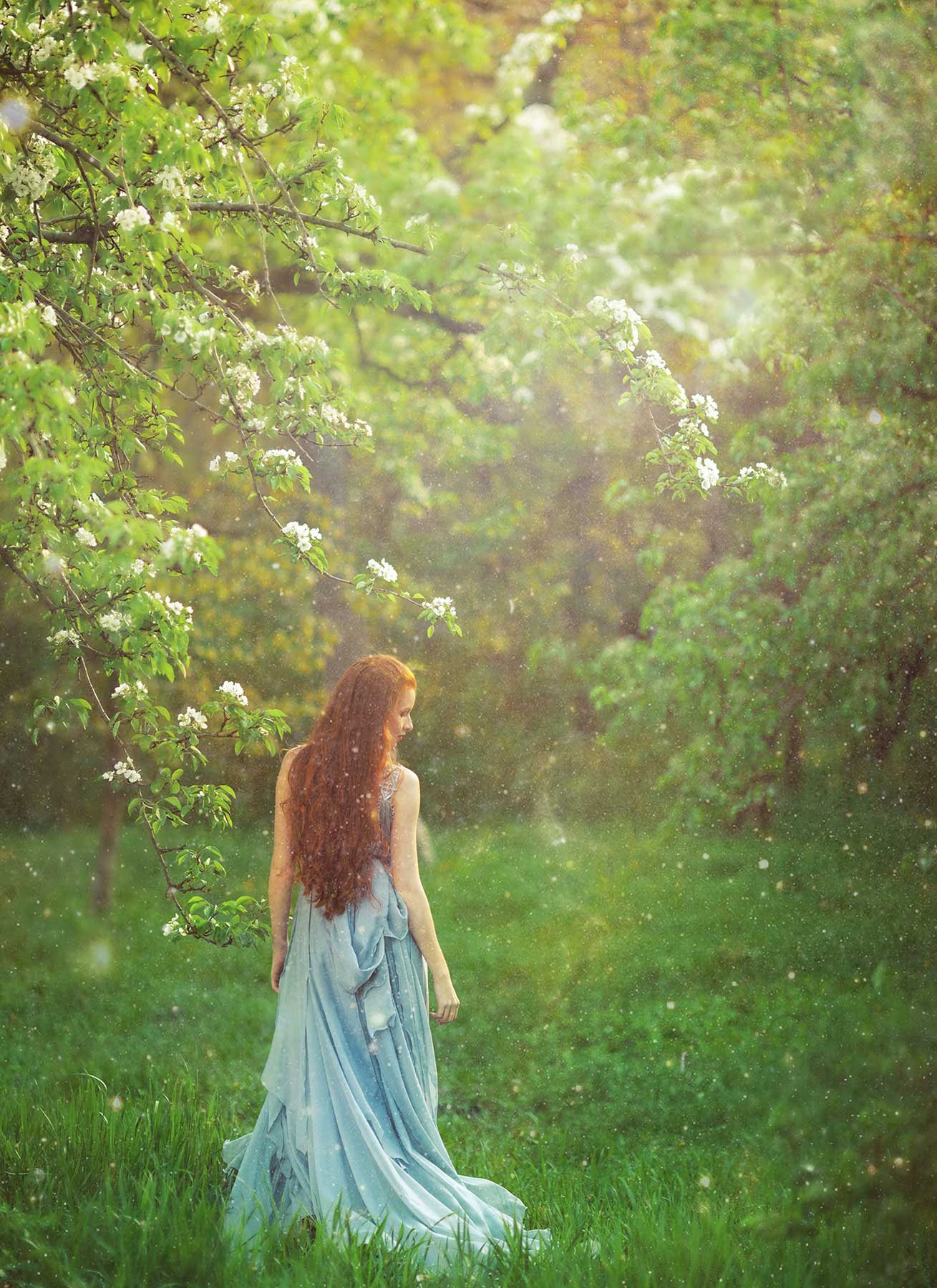
Each issue will invite you to explore your creative practice in whichever way works for you. Experience each issue at your own pace. Take what resonates with you and put the rest aside for another time.
Grab a cup of something lovely and dive in.
in this issue…
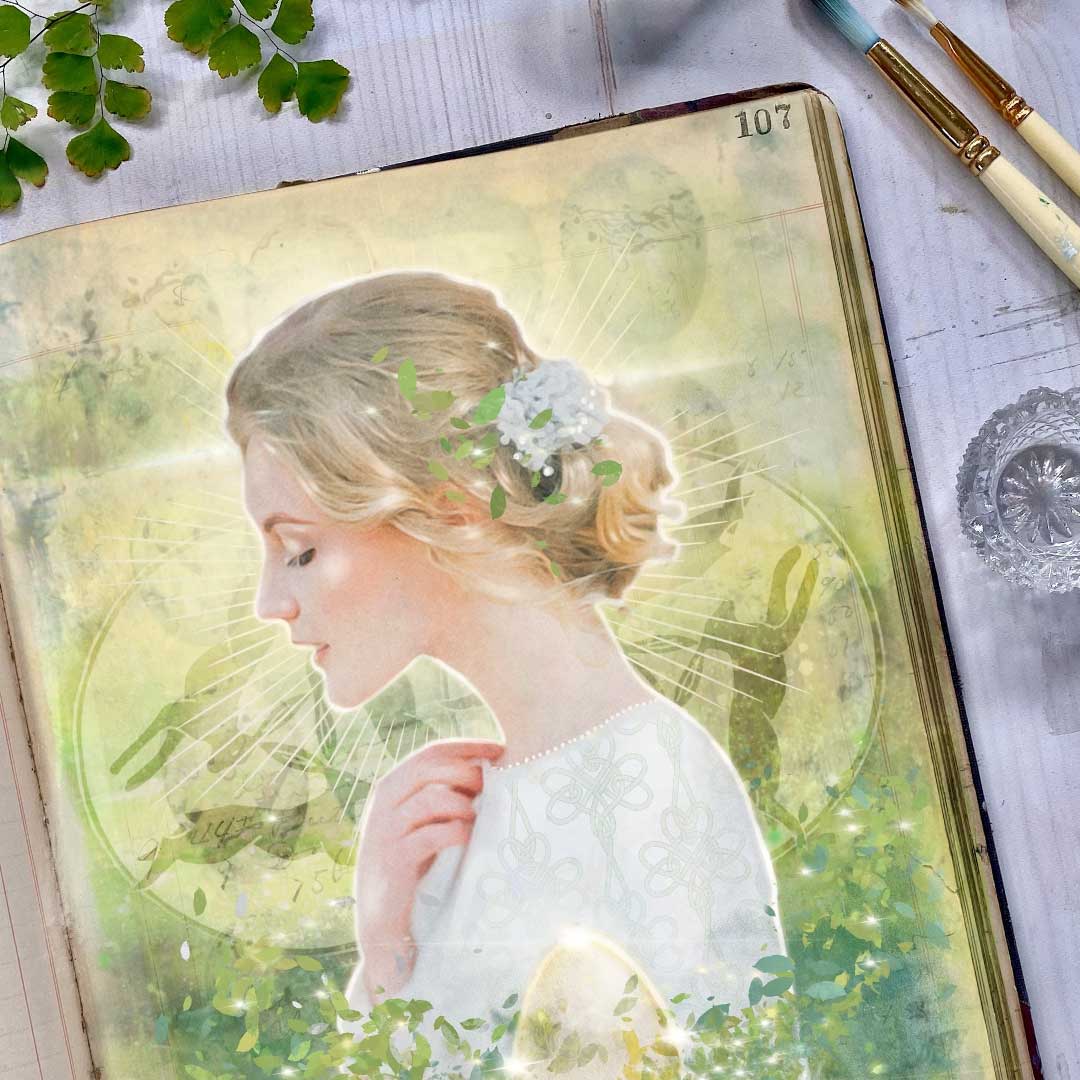
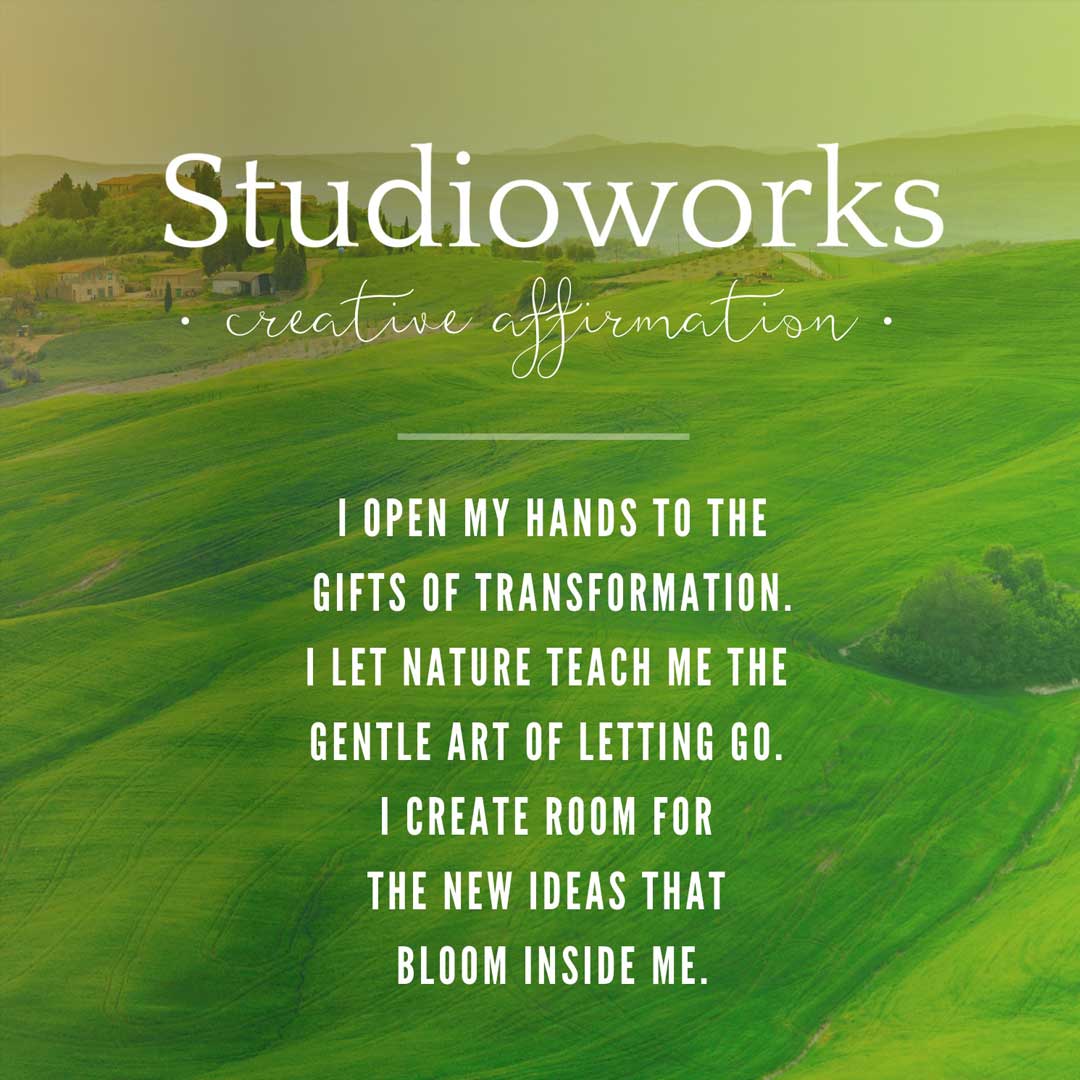
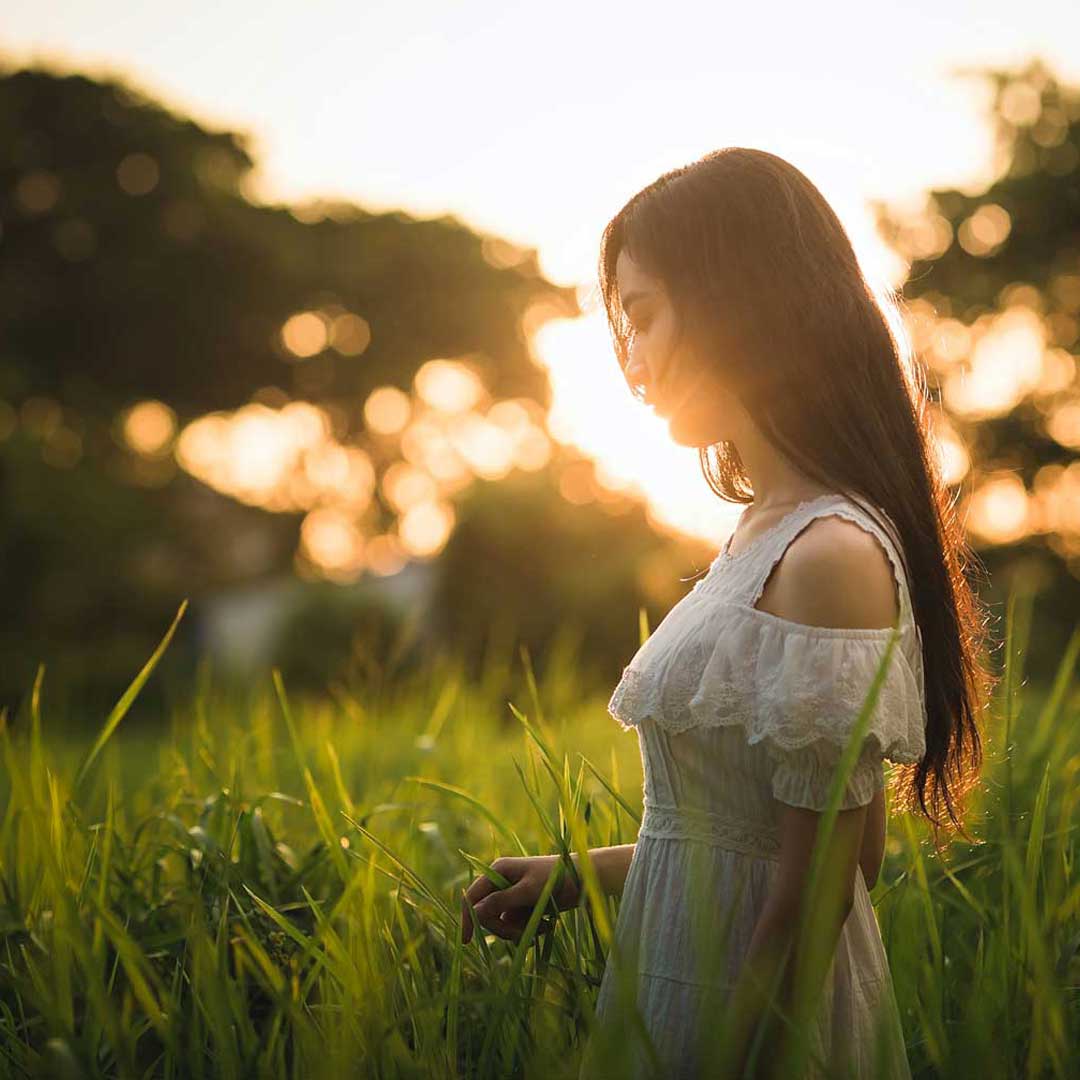
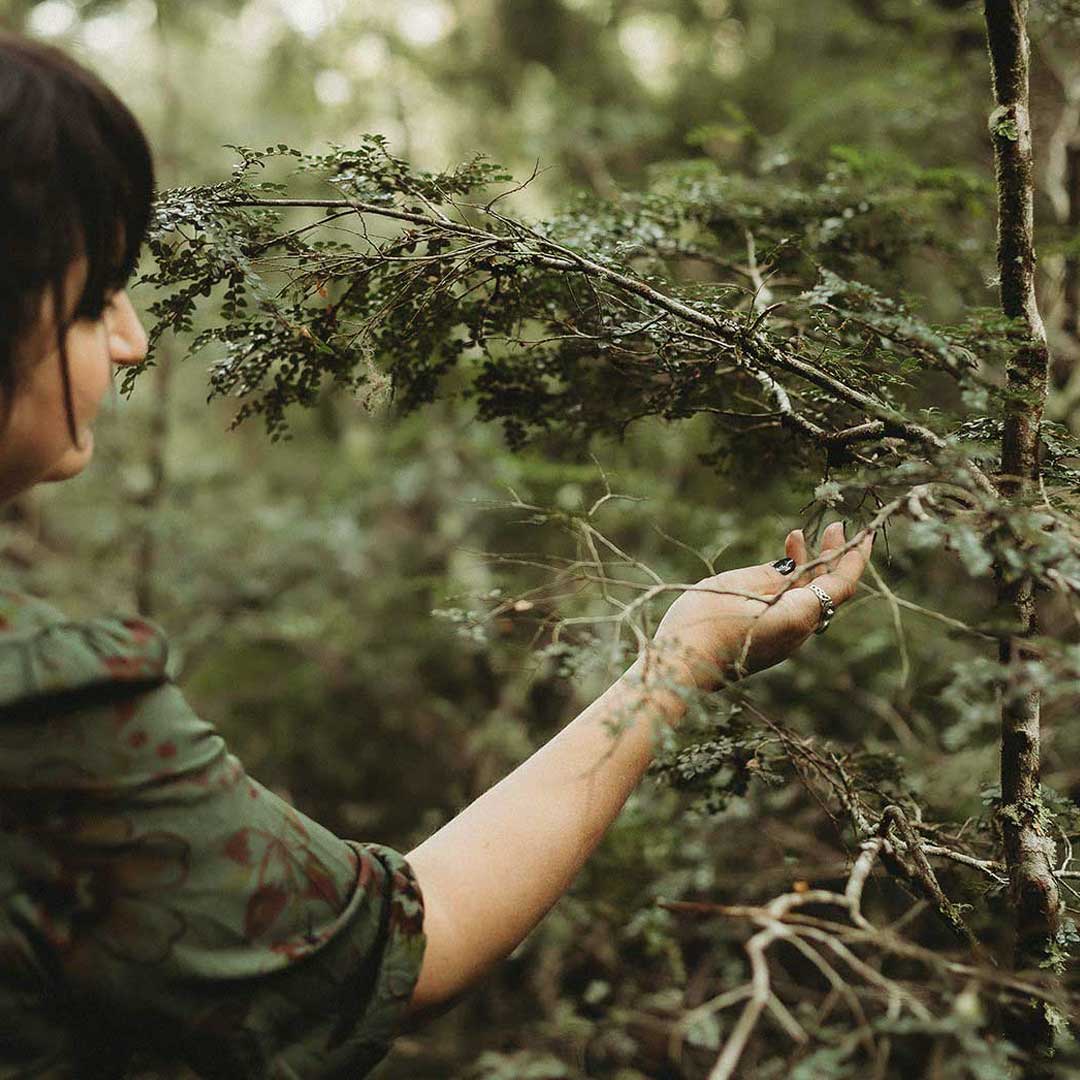
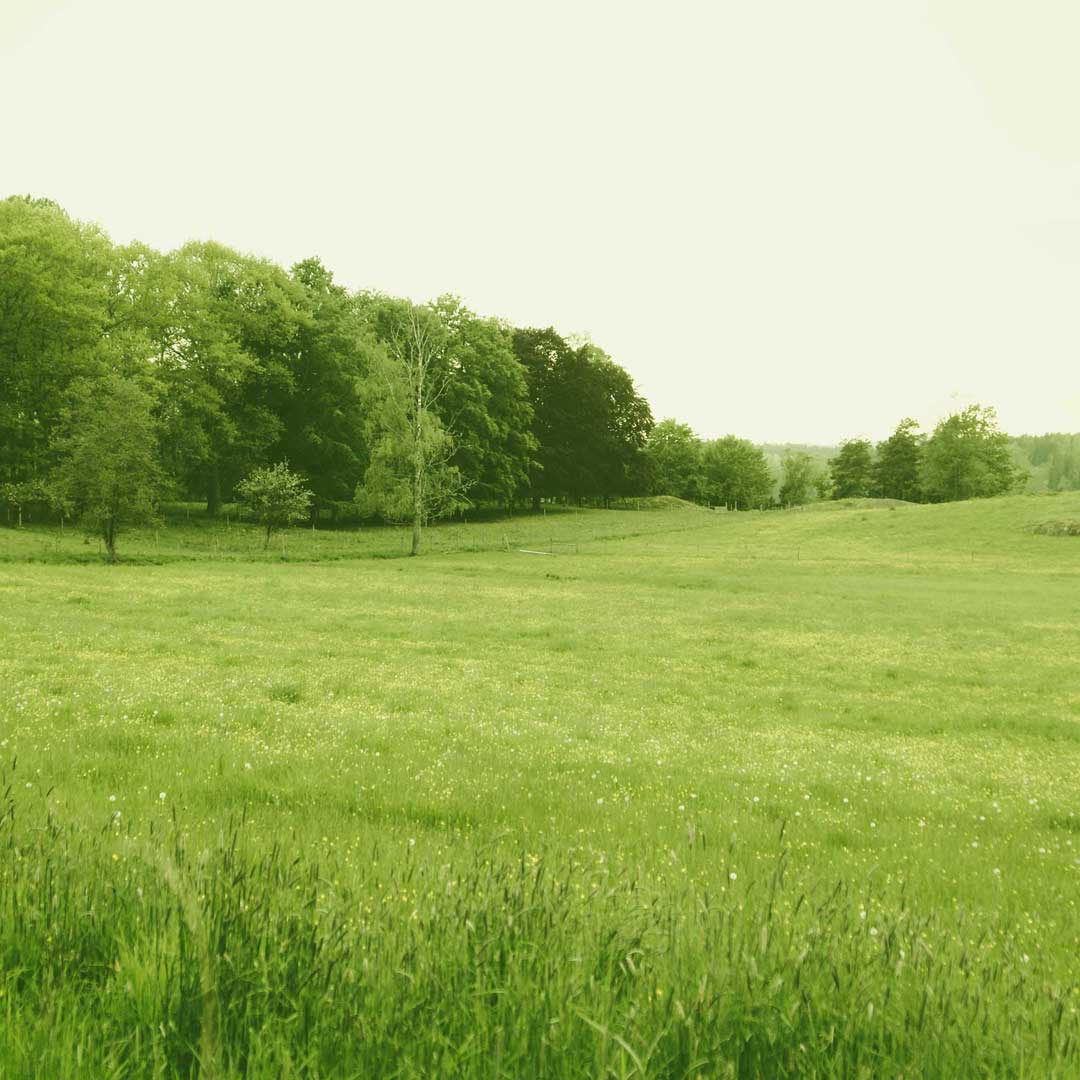
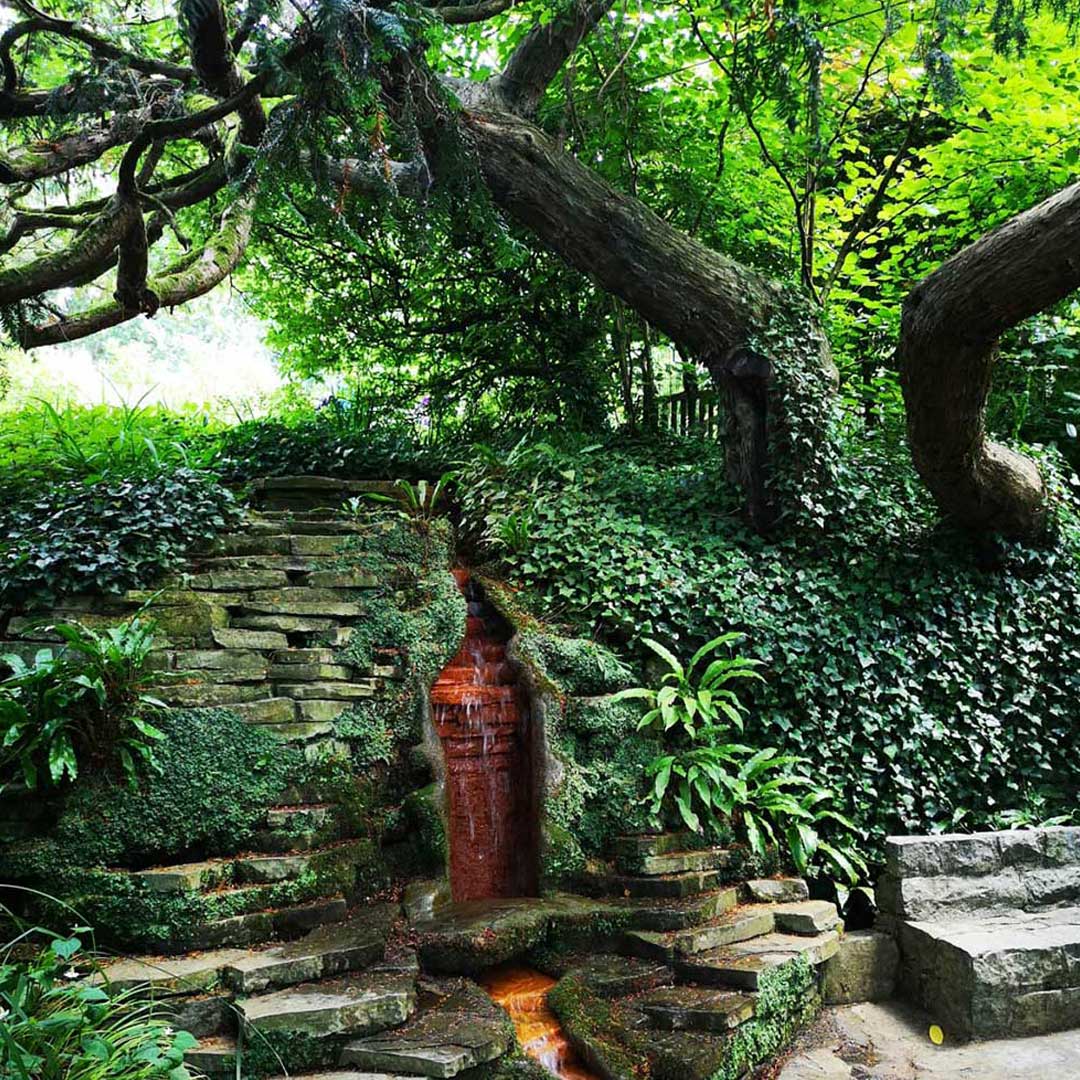

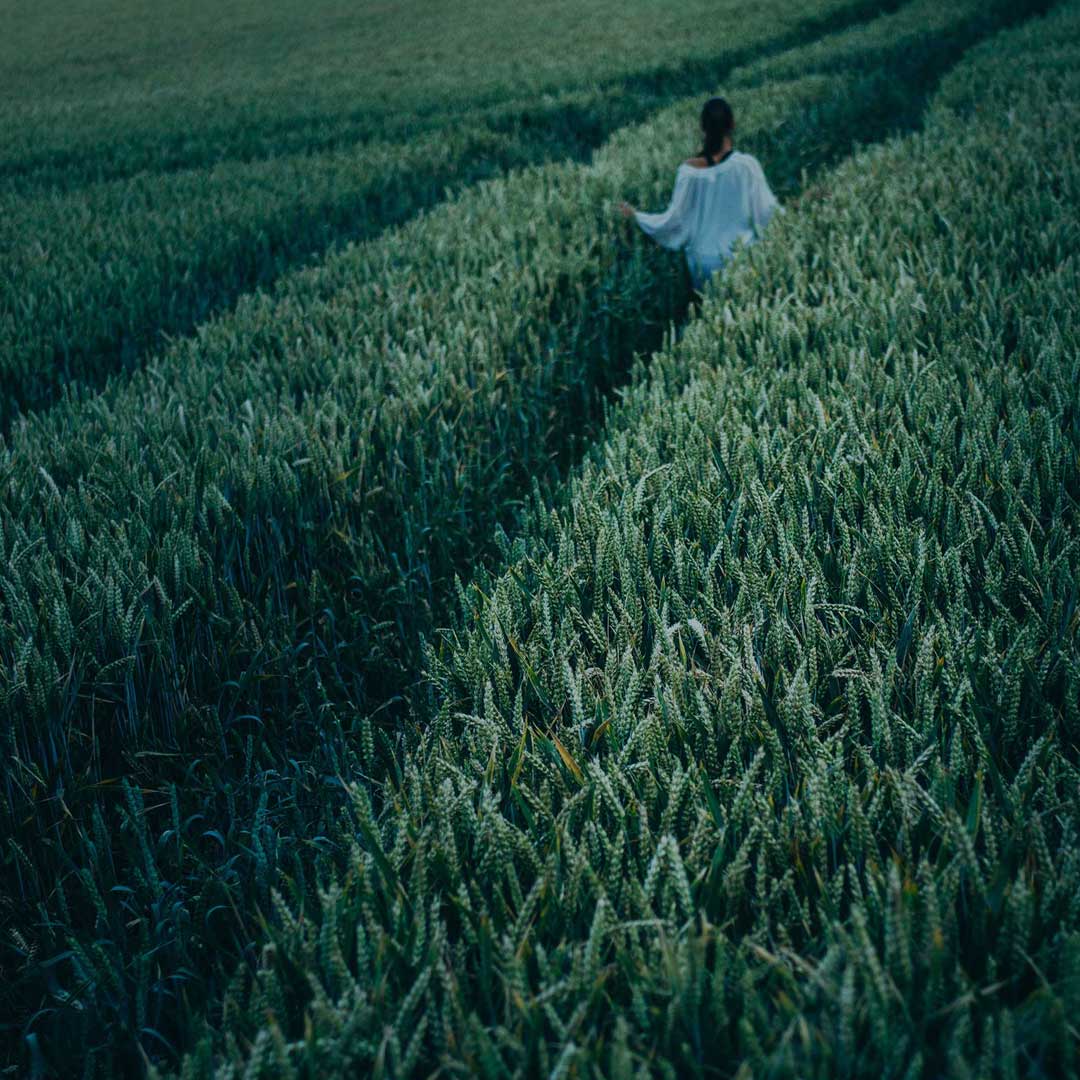
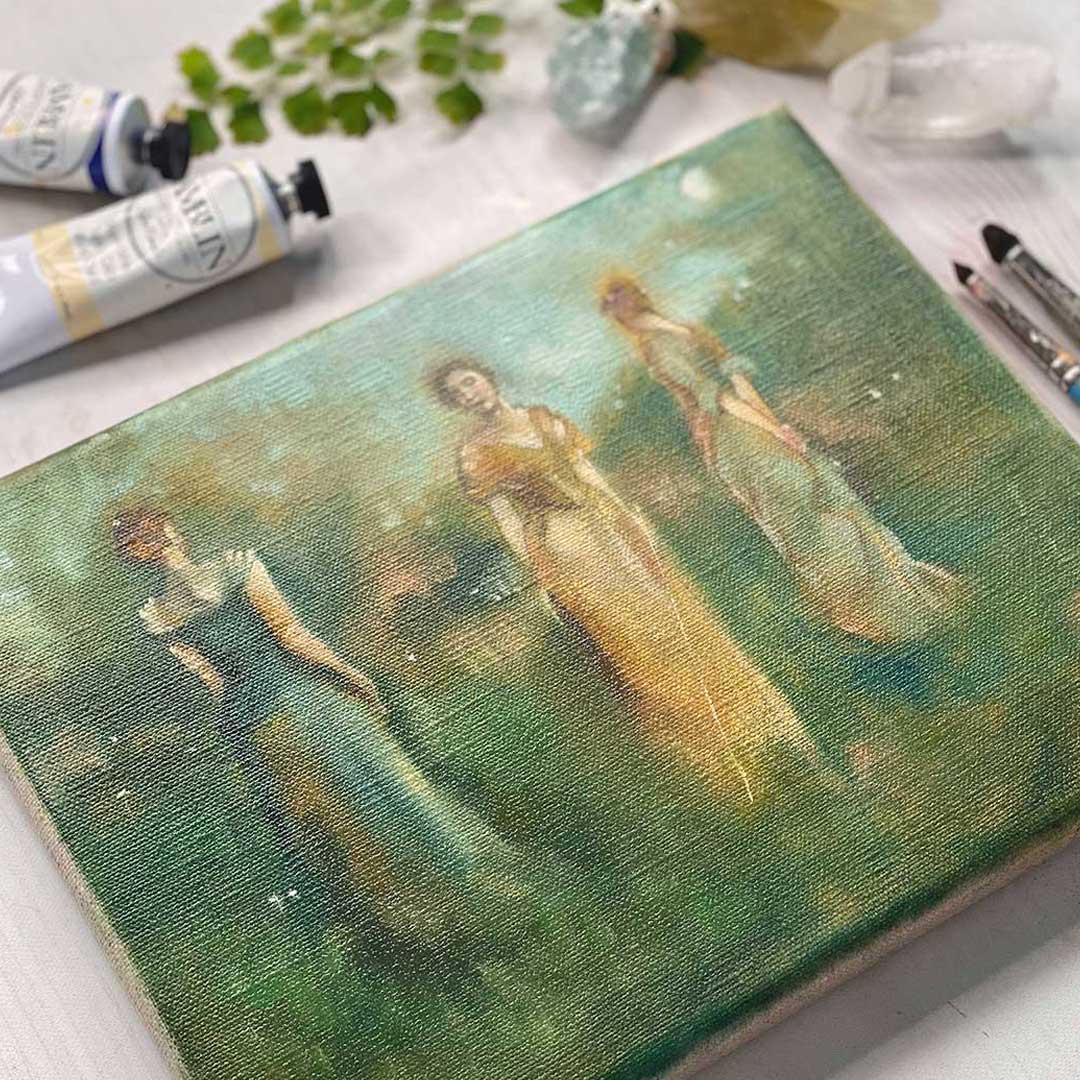
MONTHLY THEME
Come to the Water
Creative renewal is a real and necessary part of the creative cycle. It is important for us to recognize that while our creativity will never run out or leave us – it does ebb and flow. Creativity is essentially energy right? Understanding that we expend it and then need to replenish it helps us navigate the creative life with more ease and grace. Connecting this concept to an idea or visual can further our awareness of this, so with that in mind, I thought it might be interesting to explore the idea of sacred wells – to embrace the vision that your creative soul is akin to a sacred well. A place of renewal, rebirth and sustancance while also being a place that needs to be honored and tended with great care and love.
“As artists, we must learn to be self-nourishing. We must become alert enough to consciously replenish our creative resources as we draw on them.”
– Julia Cameron
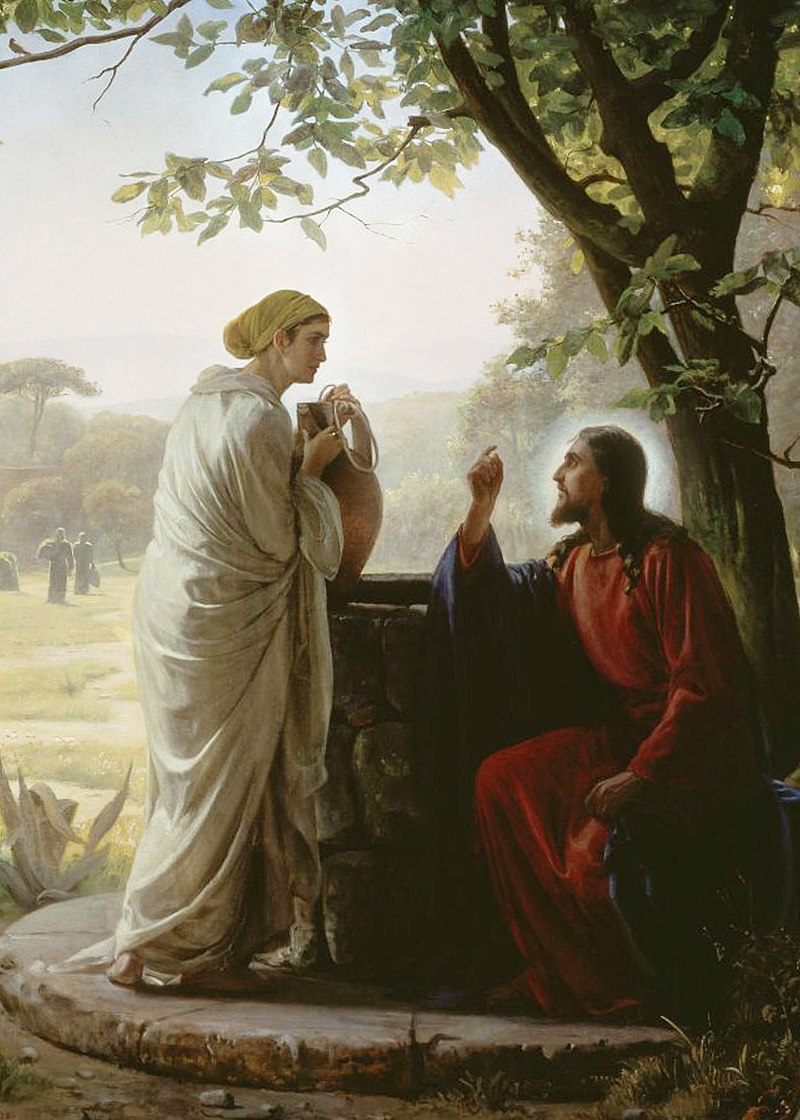
“Woman at the Well”, 1880’s
by Carl Heinrich Bloch
For centuries, sacred wells or springs have been cited all over the world. These holy places hold power and mystery for many different religions, Pagan to Christian and beyond, there is something undeniable about our tie to the earth and the life giving power of water. When the earth presented the gift of a sacred well, our ancestors took great interest. They believed the waters must be blessed, or inherent of some kind of healing power, some source of renewal. These beliefs have deep roots and depictions of these sites can be seen throughout art history.
A holy well or sacred spring is formally defined as a well or spring or other small body of water revered either in a Christian or pagan context, sometimes both. The term holy well is commonly employed to refer to any water source of limited size (i.e. not a lake or river, but including pools and natural springs and seeps), which has some significance in the folklore of the area where it is located, whether in the form of an associated legend, the attribution of healing qualities to the water through the numinous presence of its guardian spirit or Christian saint, or a ceremony or ritual centered on the well site. Holy wells in different forms occur in such a wide variety of cultures, religious environments, and historical periods that it seems to be a universal human instinct to revere water sources.
Many cultures also associate sacred water with women: with the Goddess, or with several goddesses, or a variety of female nature spirits. Greek wells and fountains were sacred to various goddesses and had miraculous powers – such as the fountain at Kanathos, in which Hera regained her virginity each year or the famous St. Brigid’s well in Ireland that has welcomed pilgrims of both the Saint and the goddess of Brigid for centuries.
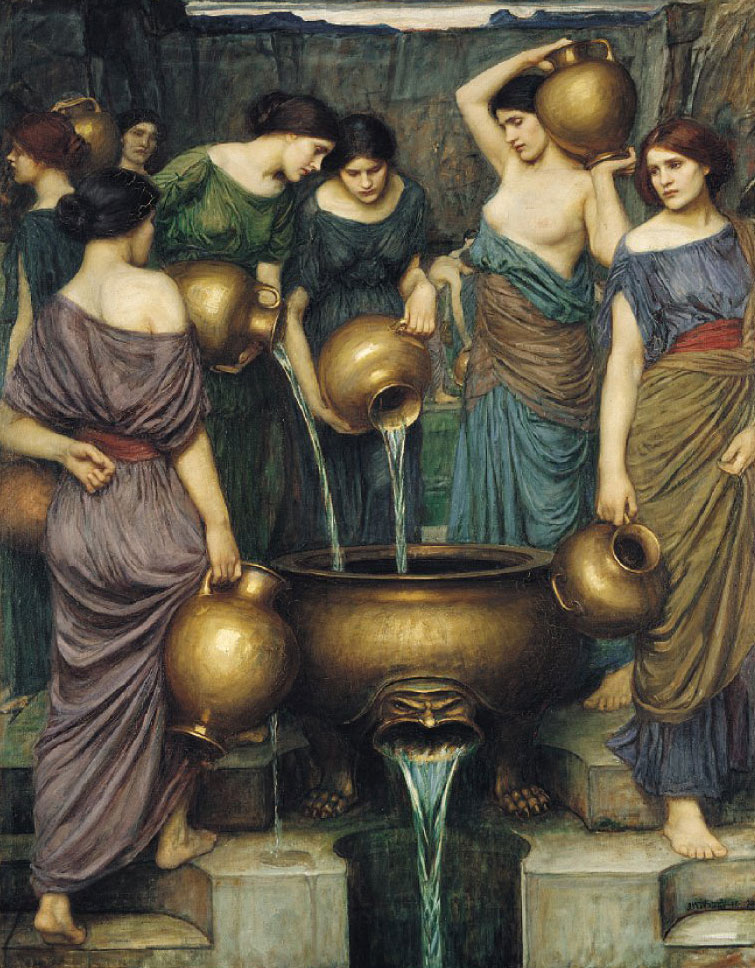
“Danaides”, 1903
by J.W. Waterhouse
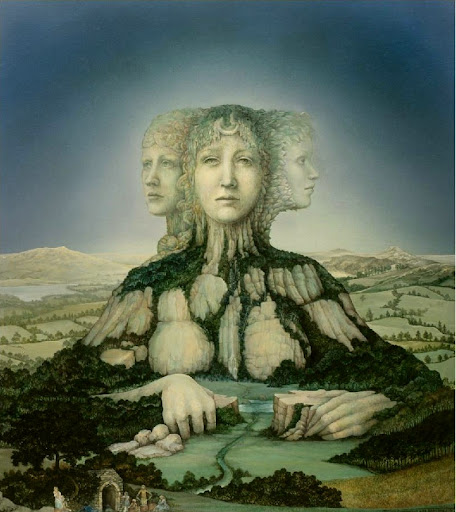
The Chalice Well of Glastonbury
As mentioned, there are thousands of sacred wells throughout the world but one I’d love to share with you is the beautiful Chalice Well of Glastonbury, England. I’ve always been a huge lover of Avalon and the Arthurian legends so this location calls to my heart.
The Chalice Well lies in a protected area of natural beauty, at the foot of a narrow valley running between the Tor and Chalice Hill and is an integral part of the sacred landscape in and around Glastonbury. For over two thousand years the Red Spring, or Blood Spring, has flowed ceaselessly and is a place where people have gathered to drink the waters and find solace, peace and inspiration.
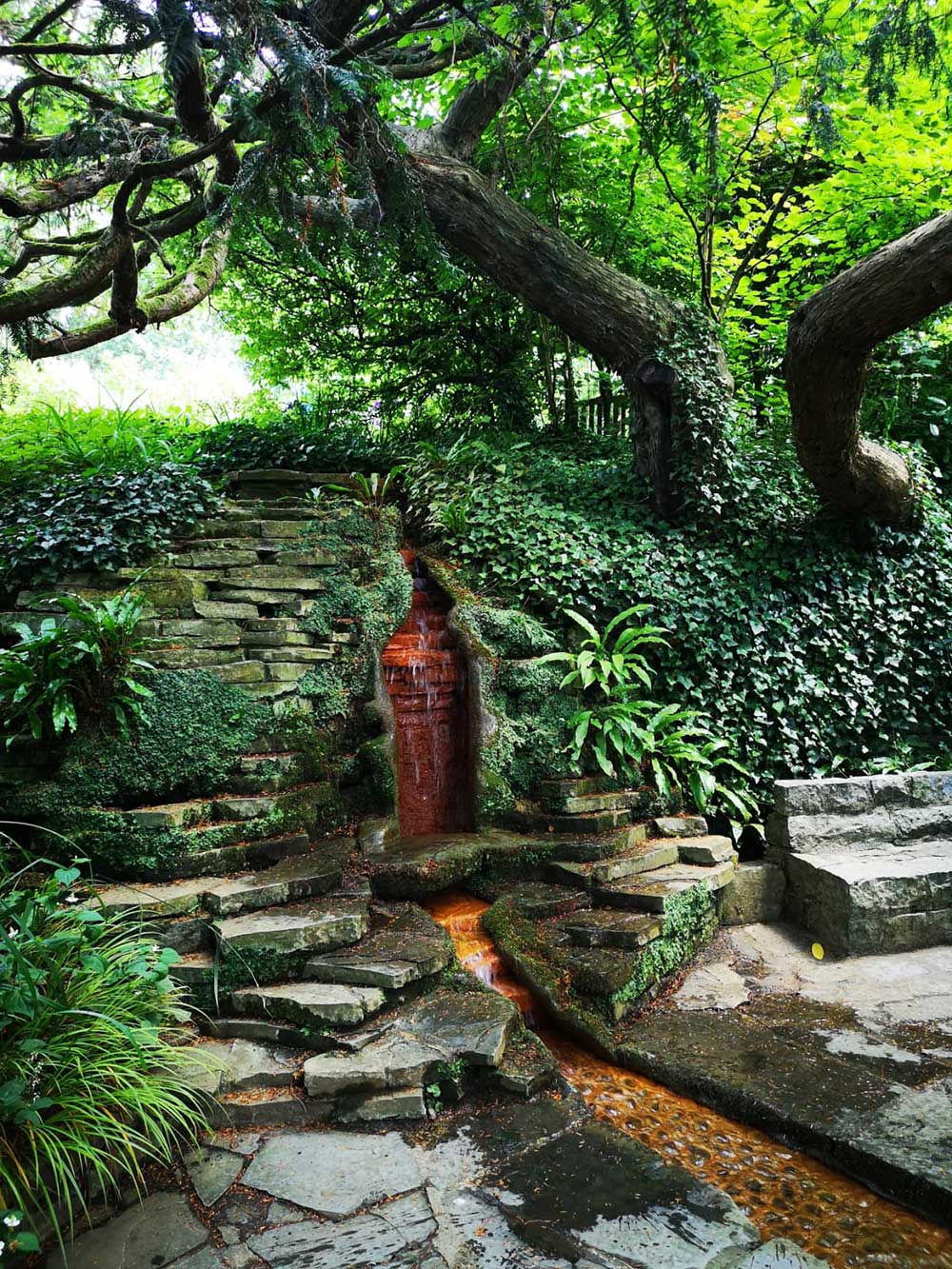
There are many legends associated with this holy site. Not least among these is that the waters represent the blood of Christ miraculously springing forth from the ground when Joseph of Arimathea buried or washed the cup used at the Last Supper. For others the waters are acknowledged as the essence of life, the gift from Mother Earth to sustain its living forms and so a continuous spring like Chalice Well is a direct expression of an unbounded life force.
The gardens that surround the Well are a beautiful place to experience the tranquility and peace of this ancient sanctuary. There is a distinct numinous and healing quality in the atmosphere, where many traditions; Druidic, Christian, Pagan and Goddess have gathered over the centuries.
The well-head is covered with an elaborate lid with a fine wrought-iron sculpture of the Vesica Pisces, a sign interpreted as representing the overlapping of the inner and outer worlds. This profound symbol is visible in several places in the gardens and reminds us of the duality of existence and the quest for unity. This is echoed in the surrounding landscape of the Tor and Chalice Hill.
While the mystery and beauty of these sacred sites surely stirs our artist’s heart and curiosity, not all can physically visit such destinations. So, how can we find inspiration in this idea of sacred wells? How can we tie water and nature to our own creative renewal?
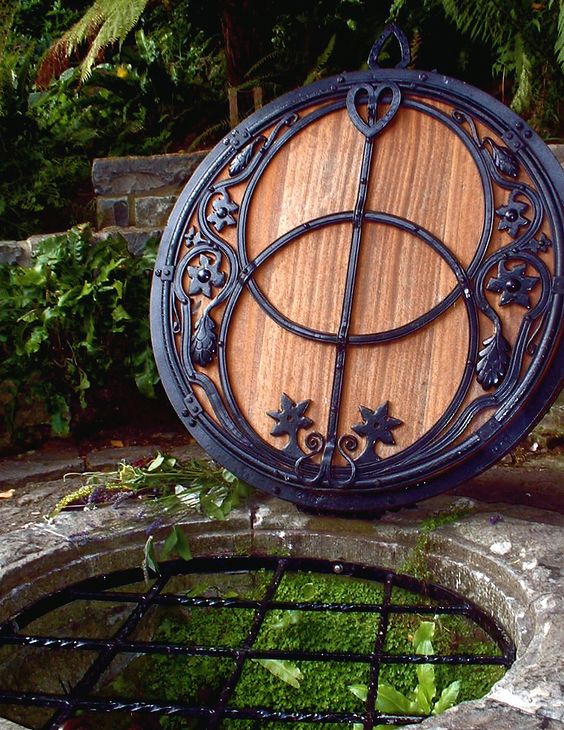
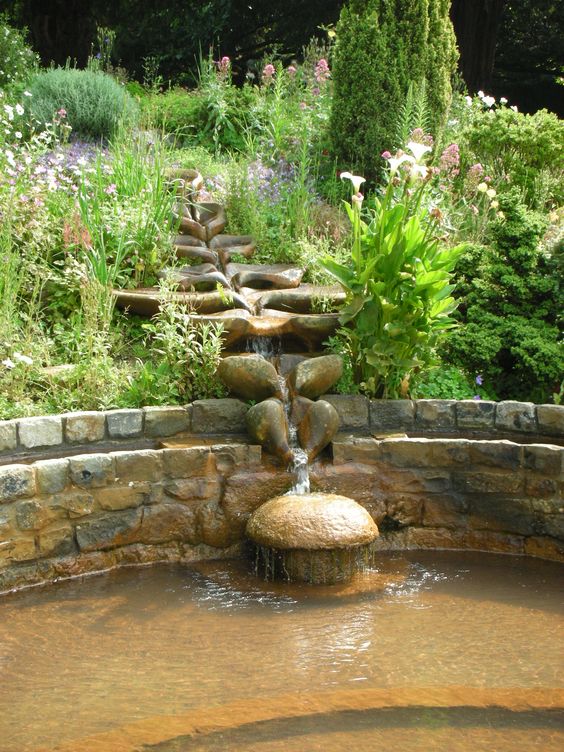
Make water part of your creative process-
Splash water onto your paper or canvas before you begin. Use a spray bottle to liquify your paint and enjoy drips or watery edges in your work. Use transparent layers to add depth and water-like dimension and interest.
Visit a body of water near you –
This could be a lake, river, stream, the ocean or even a pretty fountain. Go to this body of water on a regular basis and allow it to give you a sense of creative renewal and peace. Maybe take a small vial of it home with you and place it in your studio.
Add a fountain or bowl of water to your studio or creative space –
You could float flowers, add stones, crystals or shells to your own “sacred well”. Use this element to remind you to be renewed in your process and to always reconnect with nature.
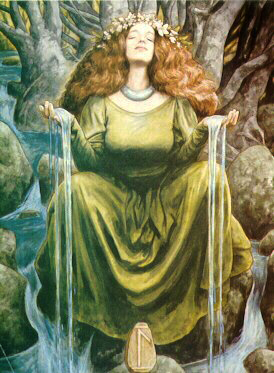
Create art dedicated to the theme of a sacred well –
This can be a visual reminder of your connection to water and nature’s power of renewal and reflection.
Take a ritual renewal bath –
Gift yourself the joy of a long, warm soak! Grab a handful of herbs like rosemary, lavender, sage or thyme and add them to a muslin bag to soak in your bath water. Light candles, float rose petals and add sea salt to detoxify and renew your body and spirit.
Add a small birdbath to your garden –
Enjoy watching the birds bathe and drink from this sacred pool. Sketch or paint them in the act!
“Each time we exhale, the world ends; when we inhale, there can be, if we allow it, rebirth and spiritual renewal. It all transpires inside of us. In our consciousness, in our hearts. All the time.”
– Tom Robbins
Come to the Water
The Story of Green
Green is a color we often use in our artworks but have you ever had a closer look at it’s symbolism and history? Well, let’s do just that and gain a deeper understanding of this color and how it originated as a pigment for the artist.
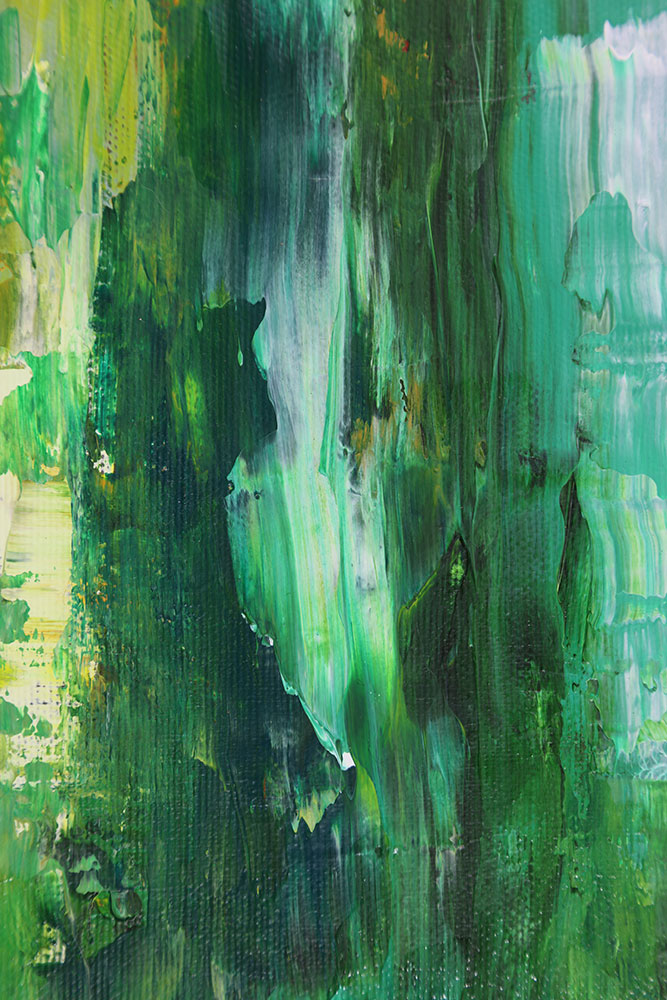
Symbolism of the Color Green
The word green is closely related to the Old English verb growan, “to grow.” Green is the color of life. It is the color of seasonal renewal. Since verdant spring triumphs over barren winter, green symbolizes hope and immortality.
The Chinese associate green (and black) with the female Yin – the passive and receiving principle. Islam venerates the color green, expecting paradise to be full of lush vegetation. Green is also associated with regeneration, fertility, and rebirth due to its connections with nature.
In Alchemy, solvents for gold were named “Green Lion” or “Green Dragon” by the alchemists. Such liquids were instrumental in the beginning of the alchemistic Opus Magnum. Transparent green crystal symbolized the “secret fire,” which represented the living spirit of substances.
In some cultures, green symbolizes hope and growth, while in others, it is associated with death, sickness, or the devil. It can also describe someone who is inexperienced, jealous, or sick.
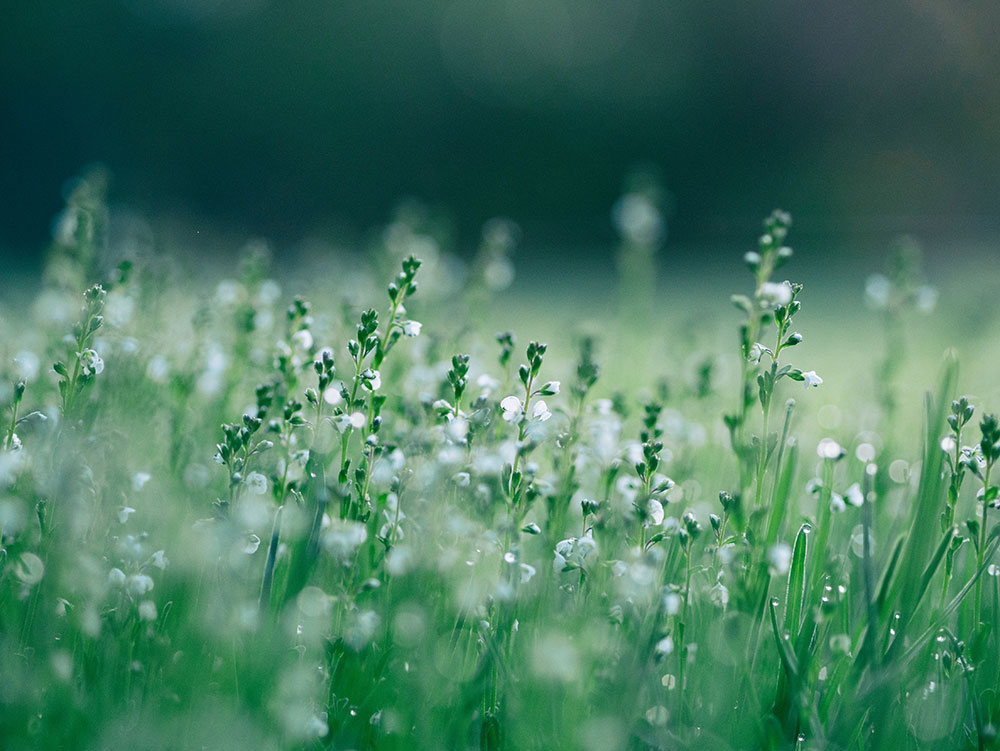
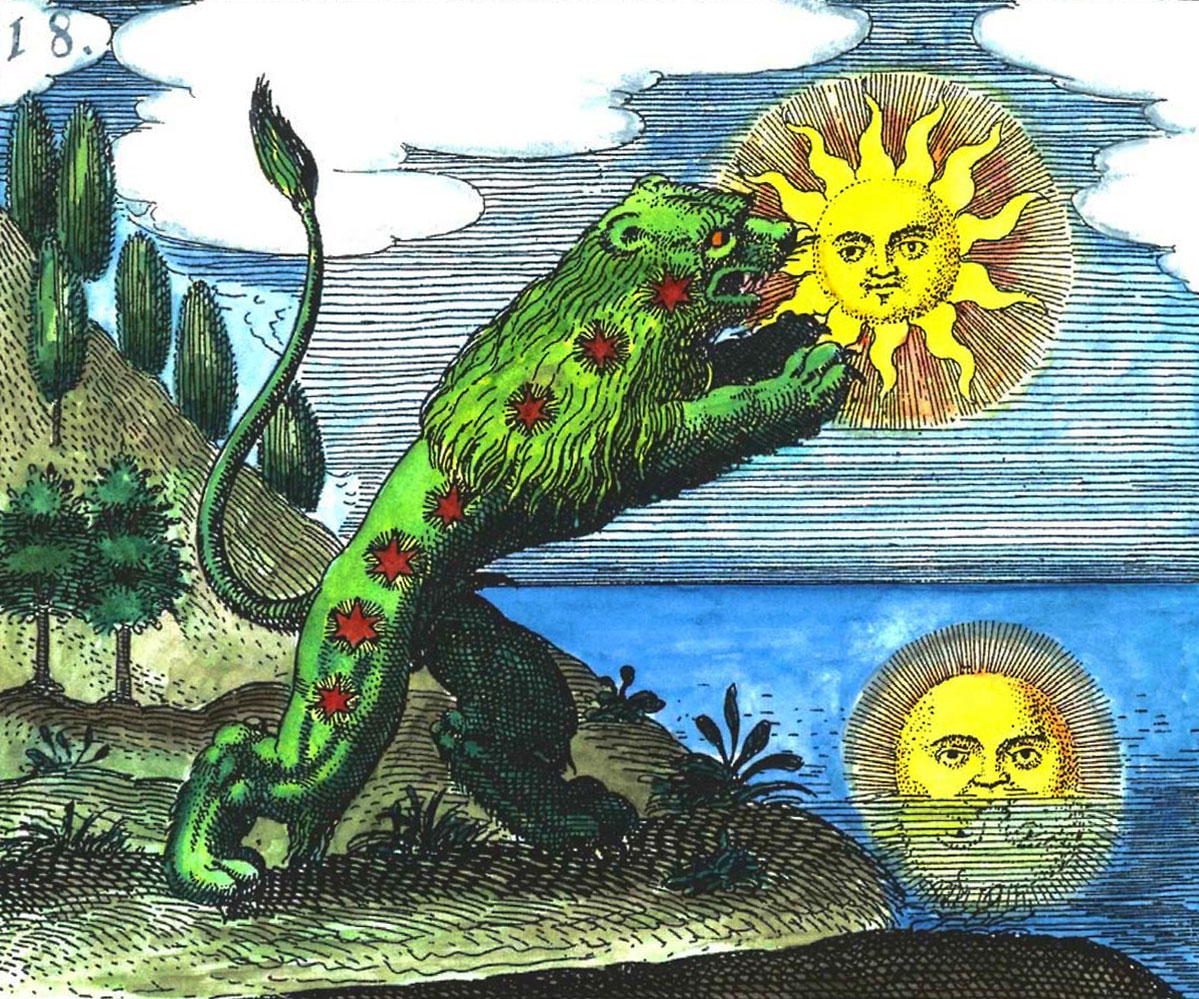
The “Green Lion”
depicted by alchemists
What the Eye Sees
On the visible spectrum, green sits between blue and yellow. In color theory, it is a secondary color, made by mixing blue and yellow. In nature, chlorophyll is what gives plant life its color.
Greens come in cool and warm hues that are often named after places and things in the natural world. From forest green to pine to mint, teal and chartreuse, greens can push into brown and blue territories, have pastel moments and can be so rich and vibrant that they look almost unnatural.
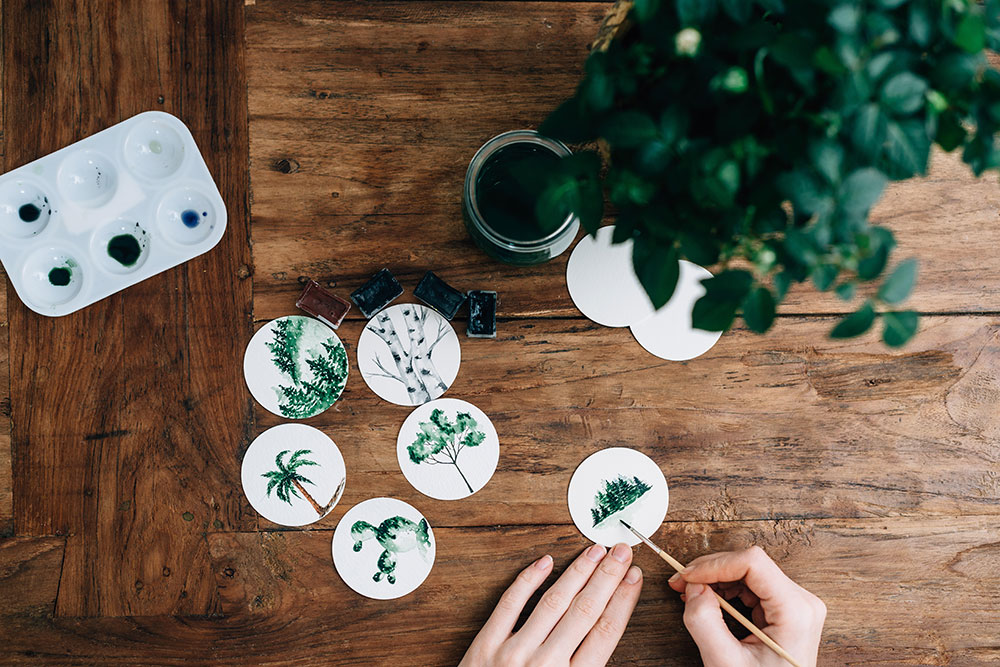

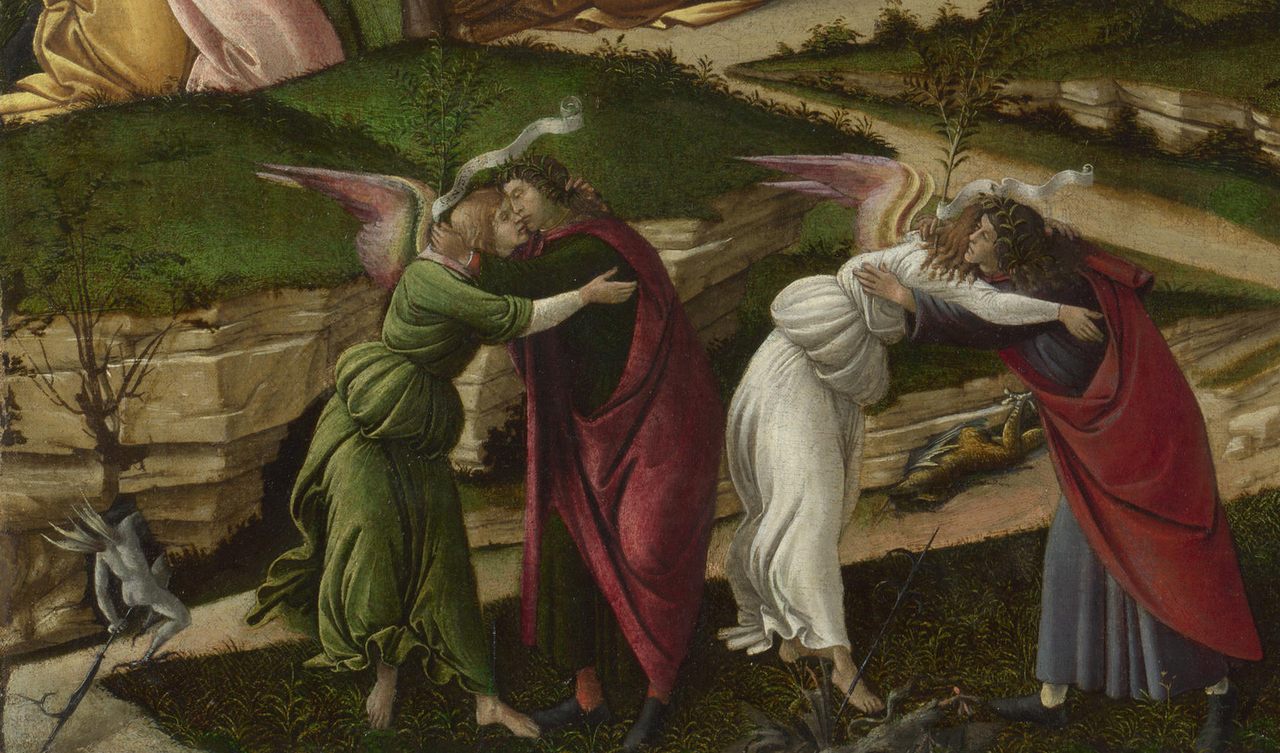
This detail of Sandro Boticelli’s “The Mystical Nativity” contains verdigris pigment.
Short History of Green Pigments
Green pigments have been used since Antiquity and are sourced from numerous minerals: viridian, emerald and malachite just to name a few. The Egyptians were fond of using malachite for mixing their greens.
In this Egyptian painting, Osiris is painted green. In ancient Egypt, green represented protection and Osiris was called “the great green.”
The Greeks introduced verdigris, one of the first artificial pigments. This green powder is made by putting copper plates into vats of fermenting wine and was used on the murals of ancient Pompeii. However, the pigment wasn’t permanent and didn’t play nicely with other paints. It is also highly toxic as Leonardo da Vinci warned in his treatise on painting.
Chrome green replaced it in the artist’s studio in the late 1800s and Vincent van Gogh was a fan. He used it liberally in his Café Terrace at Night.
Thanks to chemistry, a new generation of greens was introduced beginning in the late 18th century: cobalt green, emerald green, and viridian.
The Impressionists revived the use of the color green. The depiction of the green color of nature was revived in Impressionism partly because of the advent of tubes for pigments, which made it possible to paint on location, and partly thanks to the manufacture of new and brighter green pigments. In his painting “The Japanese Bridge,” 1899, Monet uses the color of hope together with the symbol of a bridge. The bridge stands for the uniting of people and revives hope for a peaceful future. Incidentally, Monet’s use of Emerald Green pigment, which contained arsenic, may have contributed to his blindness in later life.
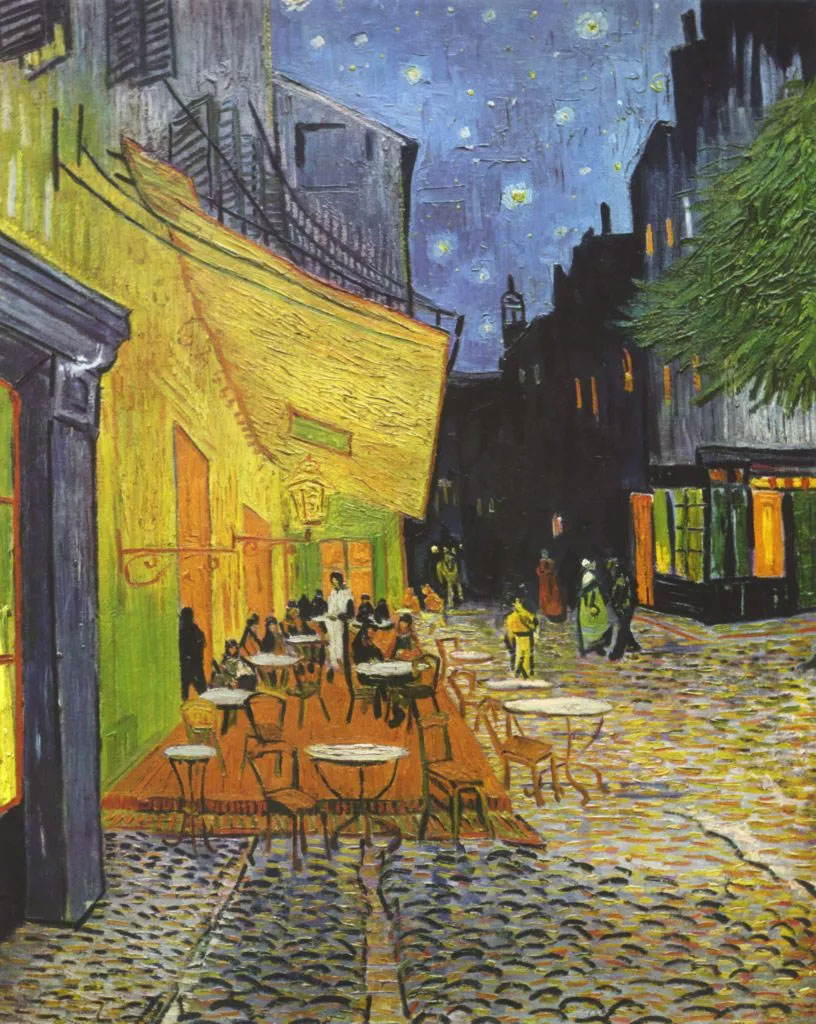
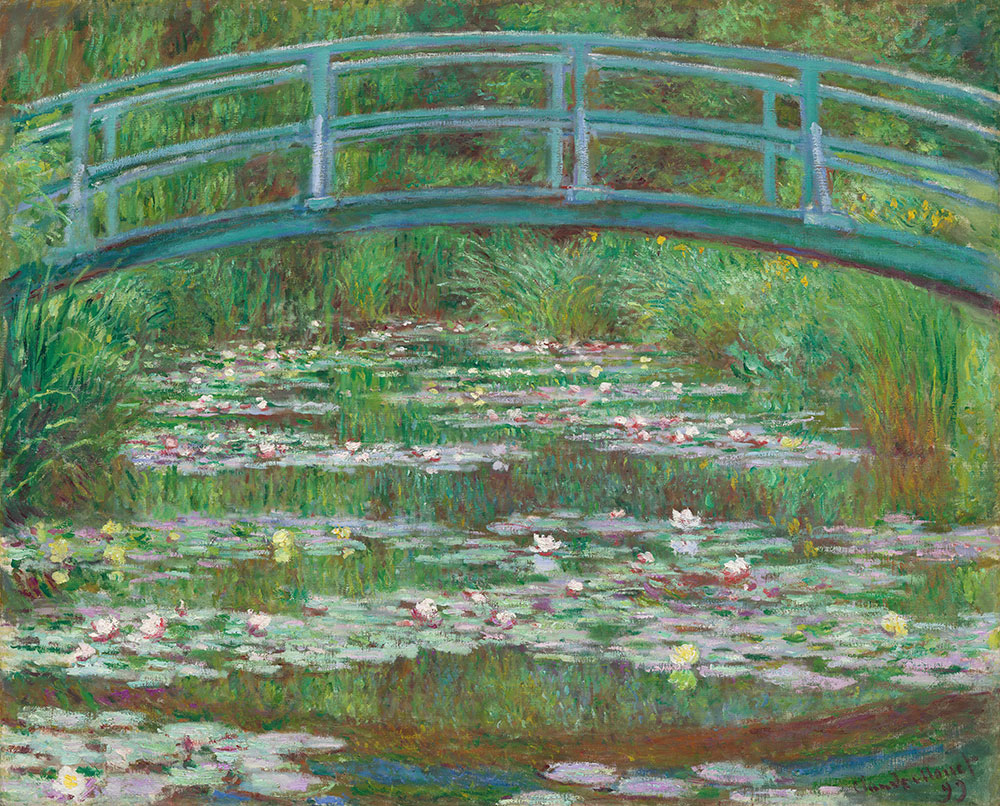
I always enjoy diving a bit deeper into the history of colors. It’s fascinating to see where they originated from, how they were used around the world and through the centuries! Now that you know a little more about green, get those tubes of paints ready …we will do some green mixing in our sketchbook explorations!
Here’s a great little video that talks more about the history of green too…
“In every wood in every spring there is a different green.”
– J. R. R. Tolkien, The Lord of the Rings
The Story of Green
Journal Prompt & Card Spread
Let’s explore our connection to the idea of renewal and pull some cards and/or write in your journal.
Knowing ourselves intimately is key to our spiritual and creative development so take a little time to do some journaling and/or a tarot or oracle card spread to reflect on this topic.
I’ve chosen 3 cards for this spread paired with 3 invitational questions to go within…
1. How can I renew my creative spirit?
2. What is keeping me from feeling a sense of renewal?
3. How can I express the idea of renewal in my art?
Please feel free to print out this journal prompt & card spread and put it somewhere in your sketchbook or journal.
The Goddess Ostara
This month, we are to welcome the first days of Spring for those of us in the Northern Hemisphere, so I thought it might be fitting for us to explore the Goddess Ostara. As you guys know, I find mythology endlessly fascinating and is always inspiring to my artwork, so let’s learn a little bit more about this Springtime goddess.
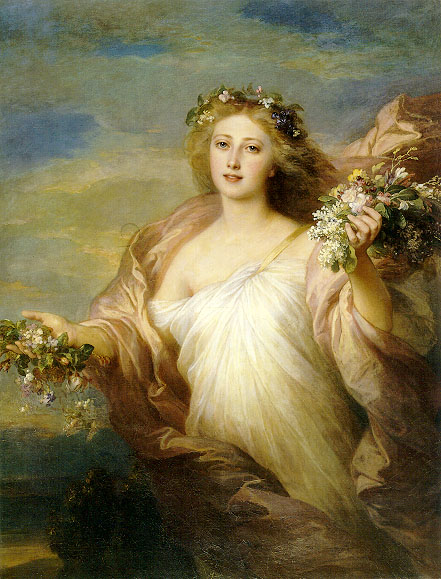
We will experience the Spring Equinox on March 20th this year. A point of perfect balance on the journey through the Wheel of the Year. Night and day are of equal length and in perfect equilibrium – dark and light, masculine and feminine, inner and outer, in balance. The year is now waxing and at this moment light defeats the dark. The natural world is coming alive, the Sun is gaining in strength and the days are becoming longer and warmer. Us Artists are slowly unfurling from our cozy winter studios and taking more time outside to reconnect with nature and feel the sun on our faces. This is the perfect time to connect with Ostara.
“There is a cleansing from winter darkness the moment we sink our fingers into spring’s fresh earth.”
– Toni Sorenson
The Myth of Ostara
Ostara/Eostre is the Germanic goddess associated with Dawn and Spring – a time of new beginnings. She is described as a maiden and is wreathed in flowers or new greenery, and often dances. The myths have it that Ostara is responsible for bringing Spring to our lands each year. One year she was late, partly because she found a dying bird in the snow, brought it back to life as a white hare, and named it Lepus. To honor the hare’s original bird-form, Ostara gave the hare the power to lay eggs one day a year. Once a year, the hare was permitted to give away its eggs to those attending the Ostara Spring festivals.
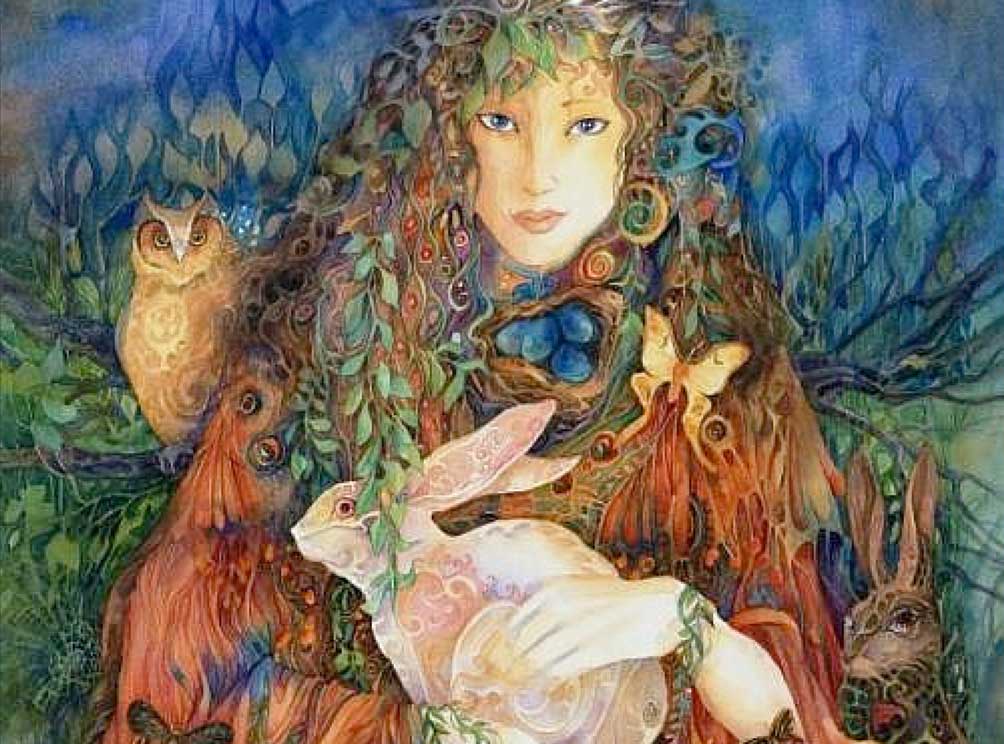
These Springtime Ostara festivals were a celebration of fertility, renewal and rebirth. It was from Eostre that the Christian celebration of Easter evolved. Did you know that Easter’s actual date each year is based on the moon? It is indeed – Easter is always the first Sunday after the full Moon that occurs on or after the spring equinox.
Some of her symbols are:
Animal – the Hare and the Egg
Flowers – Daffodils, primrose, violets, crocuses
Colors – bright green, yellow, purple
Trees – birch, ash, alder
Related Tarot Card – The Empress
*A bonus – I found this beautiful card spread that is directly related to Ostara. Check it out…
Ostara Lemon & Lavender cake
Want to sweeten up your Ostara or Easter celebration? Why not whip up this delicious cake for the occasion. I actually made this with my daughter, Grace and it is sooo scrumptious! We even got to use dried lavender from our garden!
“The beautiful spring came, and when nature resumes her loveliness, the human soul is apt to revive also.”
– Harriet Ann Jacobs
The Goddess Ostara
Renewed Artist PROMPT:
- Do a quiet study of your favorite Spring flower. If you can buy or pick this flower and bring it into your home. Paint it, sketch it…how can it’s beauty renew your artist’s spirit?
Setting Forth
by Danna Faulds
I love this poem by Danna Faulds because it reminds us of the cycle of life, the way that nature moves through her seasons is akin to the ways we move through our creative life. We must say goodbye to what is passing, we must welcome what is new. We gently step forward not knowing all the answers when we create but we trust in the journey. We can mourn what we shed but we embrace what unfurls in its place. We allow for new life to stir, new energy, new ideas, new inspirations, new creativity.
Something will be born from
this goodbye. In the pain of
setting forth, something will
die. With the release of the
old comes a moment when
nothing is firmly held, and
the unknown burns the
bridges of the past.
When the smoke clears, my
eyes seek out a new horizon.
Nothing is known here, but
the air is sweet and breathing
deeply I see long dormant
seeds send up their shoots
from the fertile ground of
change. As leaves unfurl
to meet the sun, the circle
is complete.
I will not
forget a single step of this
sacred journey, nor will I
let comfort lock me in its
warm embrace.
I do not know what fruit these
seeds will bear, but I have
faith that what is taking
root today will surprise me
with its vigor. In birth and
death, the inbreath and the
final exhalation, there is
pain and the movement into
truth. I take the step that I
am called to even if I do not
know the final destination.
Check out some of Danna’s books below…
Setting Forth
WORD OF THE MONTH
Renewal

Renewal – : the state of being made new, fresh, or strong again : the state of being renewed.
We are beings of renewal – did you know that every single cell in your body is replaced every seven years? Just as everything in nature is renewed so are we, and so our creativity is the same.
We don’t recycle creative energy, we create more. We create more by moving through the creative process. We become inspired, we imagine, we hope, we plan, we choose, we create, we observe, we share, we rest, we reflect, we let go and then we begin again.
This process is never-ending if we allow it to be. Often, we get stuck somewhere in this loop. Most times, it’s somewhere between the choosing and creating that we stall. If only, we can remember that on the other side of choosing to create is the portal to true joy. Joy may be accompanied by fear, doubt and frustration but she’s still a worthy partner in this dance. Through the joy we are renewed. The joy of creativity feeds us just as the flower is fed gently by the sun and rain. So, turn your face to the sky and let go. Let yourself be rained upon and warmed by the light of your creative spirit.
To further my point, I love this statement by Daniel Abraham –
“We say that flowers return every spring, but that is a lie. It is true that the world is renewed. It is also true that that renewal comes at a price, for even if the flower grows from an ancient vine, the flowers of spring are themselves new to the world, untried and untested. The flower that wilted last year is gone. Petals once fallen are fallen forever. Flowers do not return in the spring, rather they are replaced. It is in this difference between returned and replaced that the price of renewal is paid. And as it is for spring flowers, so it is for us.” — Daniel Abraham
“There is in us an instinct for newness, for renewal, for a liberation of creative power. We seek to awaken in ourselves a force which changes our lives from within.”
– Thomas Merton
Word of the Month - Renewal
Golden Heart Radiance Sound Bath Meditation
WITH RACHEL HILLARY
With our focus on renewal in nature this month, it seemed this special meditation and sound bath would be just the ticket. Give yourself 20 mins or so to sink in and enjoy this beautiful, heart-centered journey.
Rachel will share a little about this experience –
This meditation took a while to create as a lot of energy has been poured into it. It is crafted to be an activating meditation, with a mixture of soul frequency singing through me, and a sound bath of birdsong and beautiful music, along with gentle guidance to summon the golden heart radiance available through you, during this potent time on earth. Vocals by Rachel Hillary Music by Chris Collins Indie Music Box
Xo,
Rachel
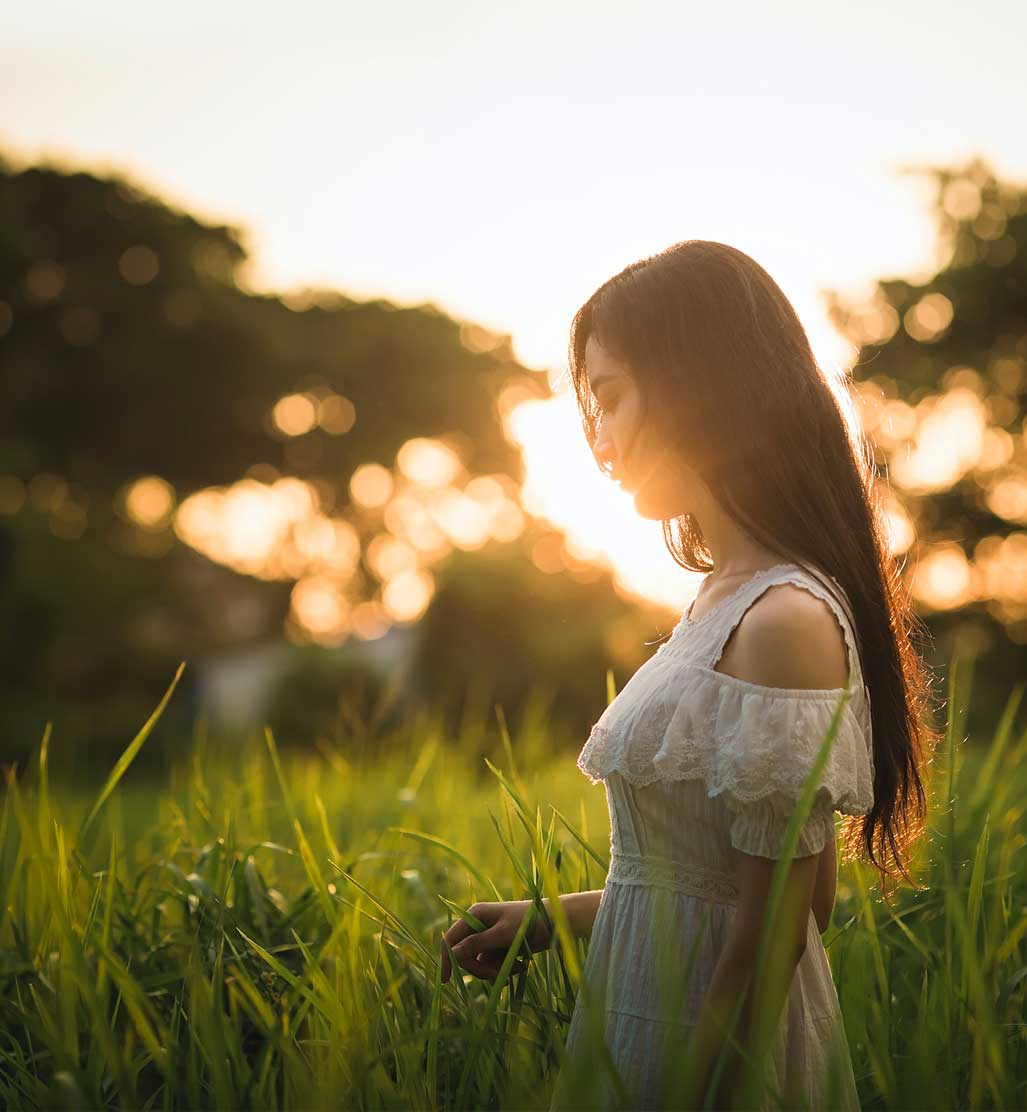
“When we work with love we renew the spirit; that renewal is an act of self-love, it nurtures our growth.”
– Bell Hooks
Golden Heart Radiance Sound Bath Meditation
You can download more meditations and connect with Rachel here…
Monthly Affirmation
Do you remember your wildness?
By Natalie Eslick
You were wild, once.
Do you remember your wildness?
You are intimately connected to this beautiful Earth.
You are kin to the untamed and free things.
Your creative heart beats wild songs,
songs of sap rising in towering trees,
songs of feathers held aloft by wind,
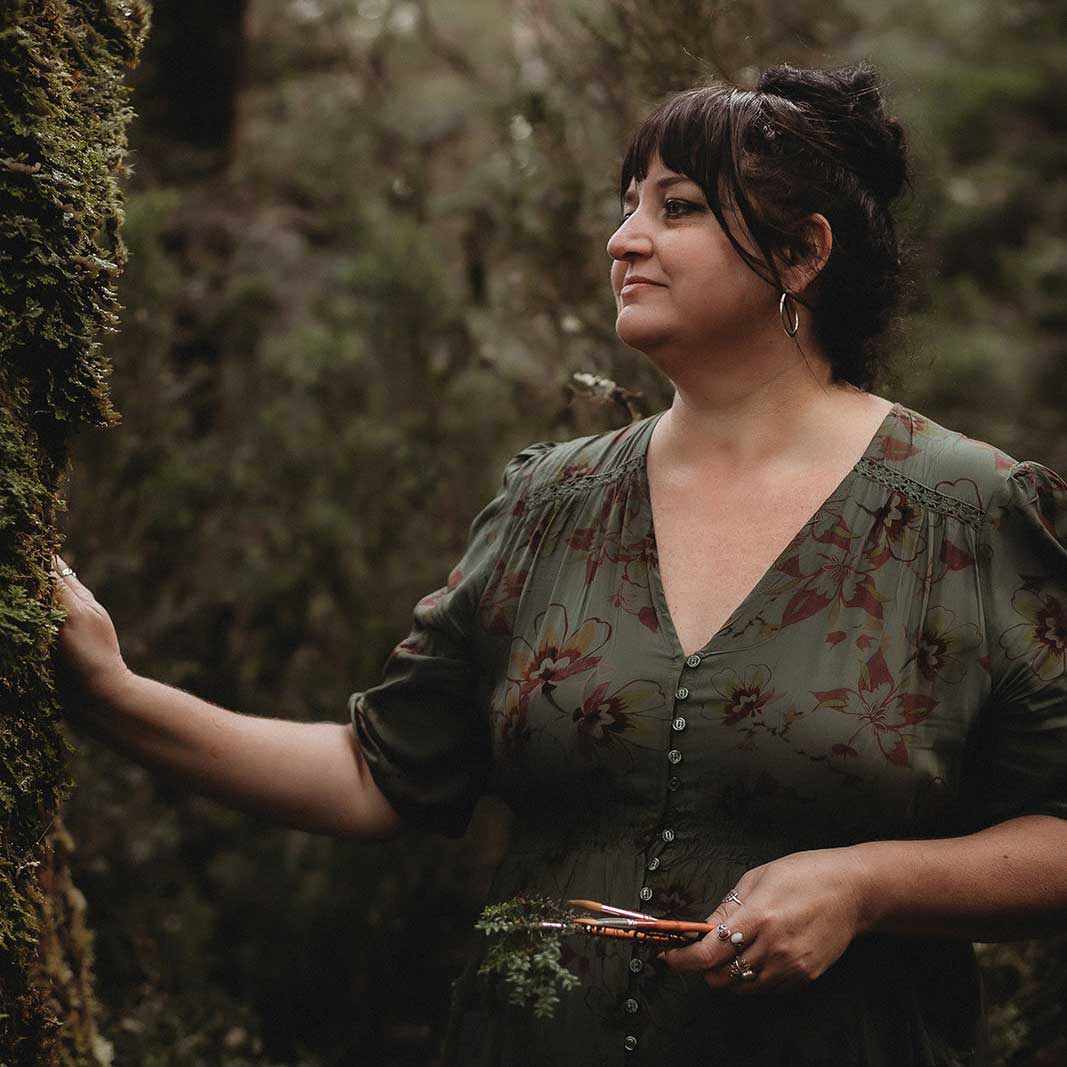
songs of soft feet walking through fallen autumn leaves,
songs of moon rise and sun fall.
You are made of stars.
You are north, south, east, west.
You are earth, air, fire, water.
And you are so much more.
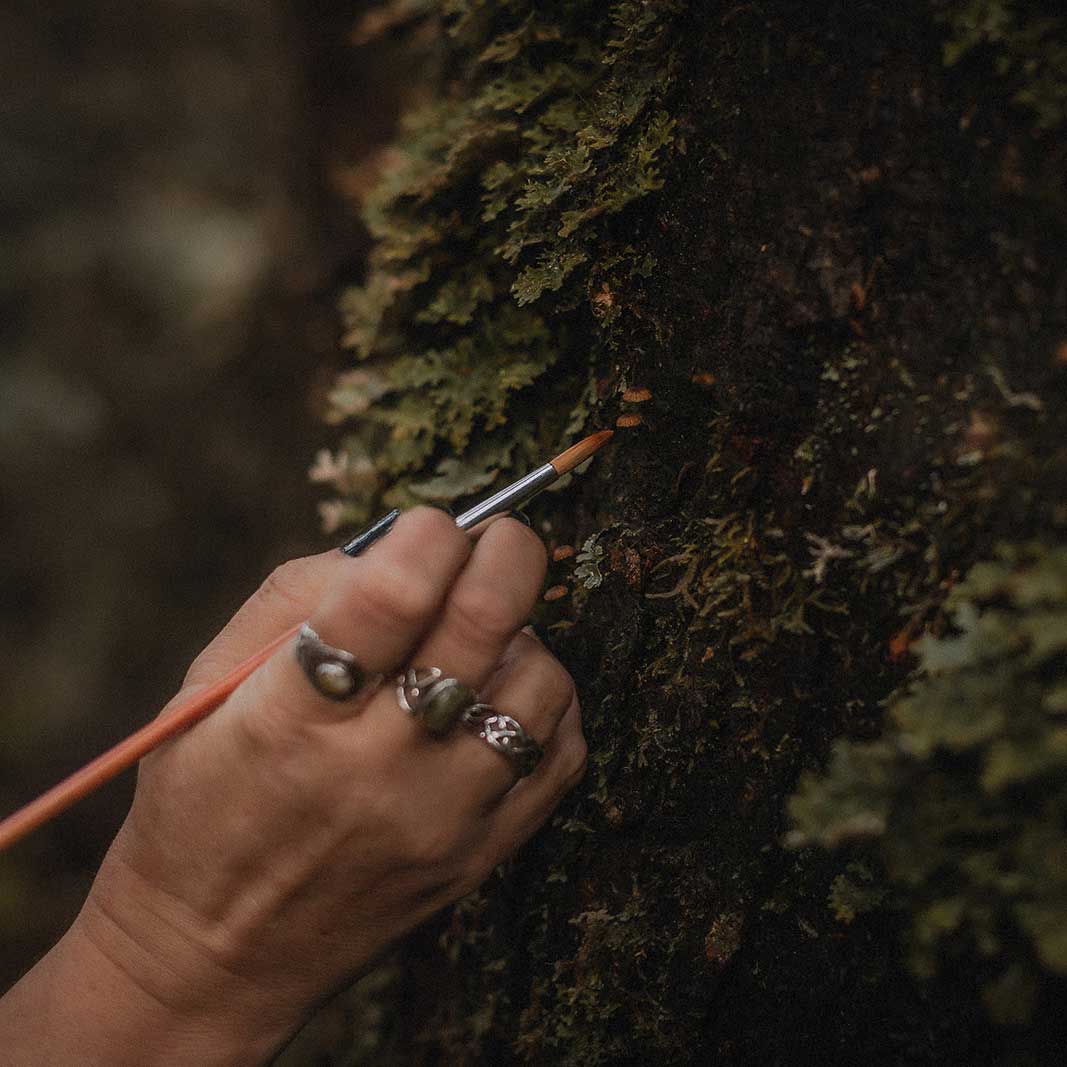
I am on a quest to remember my wildness. To renew my untamed energy. This will be a lifelong quest, because it is easy to become trapped back into feeling small, the same, lesser, alone, all the processes and constructs that keep this industrial, capitalist machine turning. The machine likes neat and tidy, constrained and compliant. But that, my dear, is not who we are. It is not who I am, it is not who you are. I see that giant tree you keep in your heart, her roots itching to plant deep, her vast branches yearning to unfurl, to hold her face to the light – to hold your face to the light – leaves tickled by million year old winds. That energy is strong.
While my witch-in-the-hut-at-the-edge-of-the-forest spirit is powerful, where I am grounded right now is much less poetic. Suburbia. Rows of houses not dissimilar to each other. Constant lawn mowing, tree butchering, children playing, dogs barking, cars and pool filters and backyard parties until late on the weekend. But that doesn’t mean I can’t connect to the wild, to nature, to that restorative medicine on a day to day basis. I choose to find the greens for my eyes to rest in. I choose to feed the birds so that their song fills my heart and home. I choose to sit outside under the tree I planted and feel the breeze in my hair as I listen to it ruffling her leaves. Fostering connection to, and being curious of, the natural world allows us to see even more beauty, more wonder. To build a compassionate and reciprocal relationship with the wild outside, and inside us.
Much of this is a choice, and it is a willingness to learn to be present. I am choosing to use a Beginner’s Mind and to pay deep attention to where I am and what I am doing right now. To name the subtle beauty as I see it, and hold space for its actuality. To find connection to that beauty – to that simultaneously ethereal and grandiose magic. And oh, how my heart grows. These last two years, as we have all been mostly shut away from the rest of the world, in and out of lockdowns, and as my artistic growth has become an ever bigger part of my life, I realized that I needed to find that connection on a smaller, but closer and more consistent scale. Even in the suburbs. Creating my wildlife honourings was part of this – I don’t just observe, I become the creature I am honoring as I work. While I was drawing reflections in their eyes and trying to see what they see, I realized that I needed to see reflections of the wild in my own eyes too. Given the restrictions to movement we had here, that meant lots of walks around my local neighborhood.
I am so lucky to have a water catchment area at the end of my street, which allows for watching all sorts of water birds and finches and wrens. This was the most obvious, the most audacious visual spectacle. But as I walked more and more often, slower and with more intention, I noticed more. The smallest things that were fleeting, but that I was present to. Each moment of deep observation felt like magic, made my heart a little lighter, made me feel so very humble, and put my human woes into perspective. Everywhere I look is a visual feast if I open my heart and mind to it, if I allow myself to find the little details, the little bits of magic that inhabit the world around us. There were the mosses growing on the rubbery thing smooshed between the walking path pavements – olive green and drab, segmented into little squares, like little mossy bricks clinging to that rubber. Two days later I saw them again after it had rained the night before – they were a different green altogether, raised higher, and there was even a little yellowish highlight in some areas.
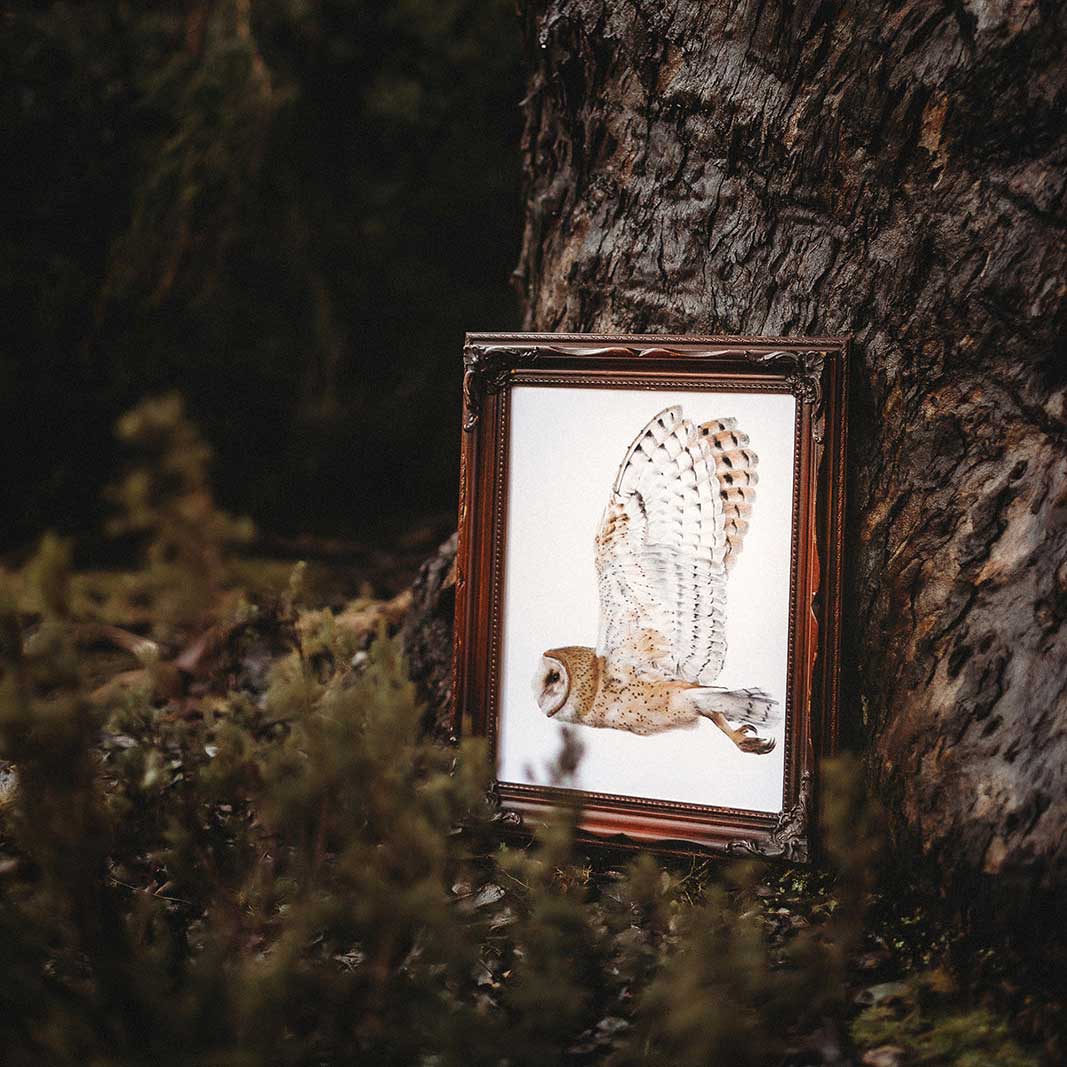
It was every bit as alive as you and I. The moss was Being. The moss is being. All this goes on largely unnoticed to us busy humans, but it is so, so wonderful, and we miss out on all this incredibly complex, astounding abundance if we don’t slow down just a moment and take notice.
Taking time to notice these little bits of magic, in such small and easily achievable bite sized amounts of time, invited nature into my heart and home in a more profound way. I look forward to a wander, be it in my neighborhood or my small backyard, to seeing what I can find, to looking at more than my feet, to looking at more than where I am going. To being present rather than in my own head and barely seeing what is all around me. This is connection, to me. It is being present where I am and knowing that I don’t have to be in far away places to find that connection. It is seeing the tiny magical beings under my nose, or in my trees and shrubs, it is acknowledging the personhood of the creatures around me, of the trees and rocks and hills and watersheds. And acknowledging that means I am acknowledging I am here too, I am witness to wonder. Letting small delights be as enchanting as big magic.
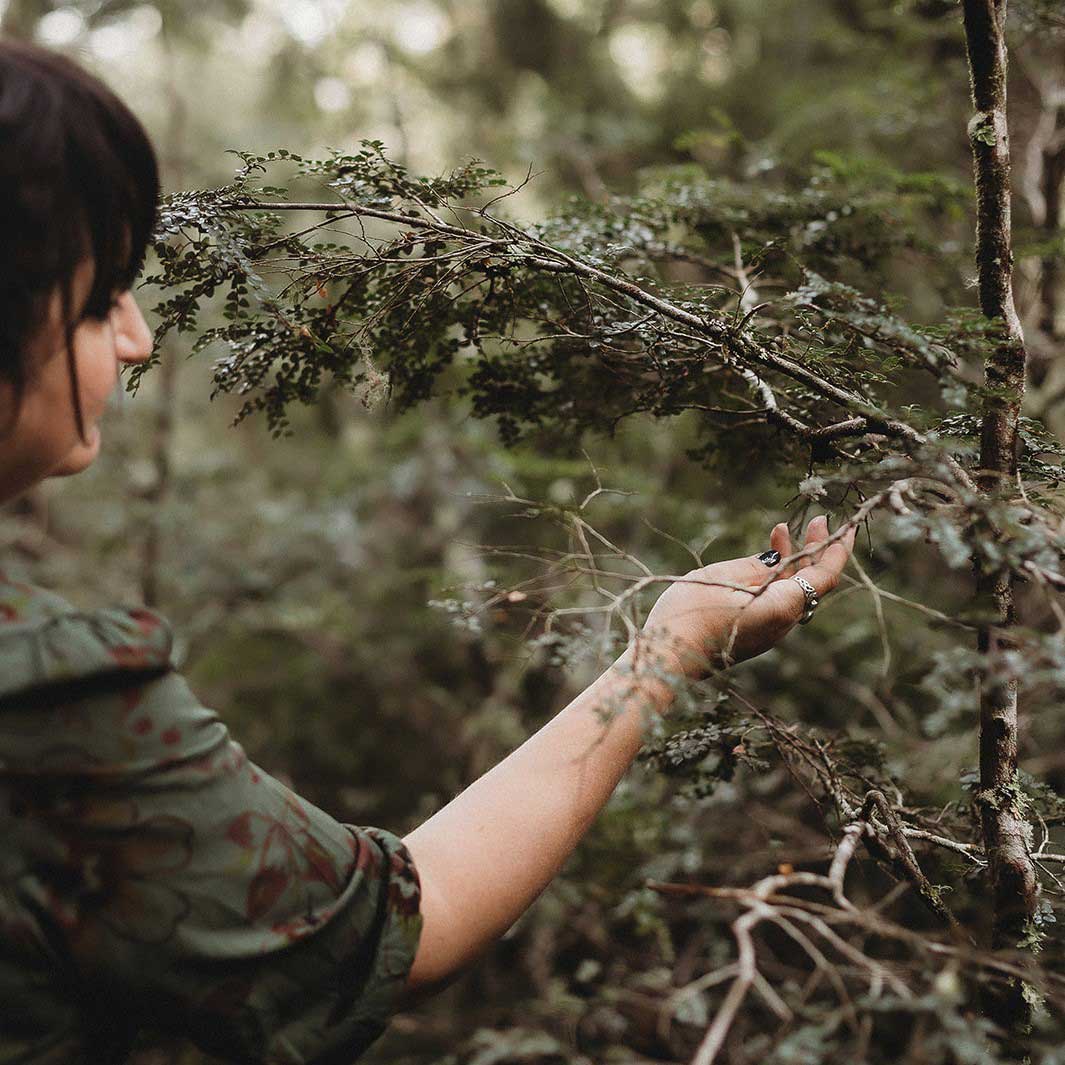
I try to stop and take a moment to use more than one of my senses whenever I can, and in doing so, these sensory memories become indelible. I have many, many seeing memories, because for humans that is often our primary sense. We are intensely visual creatures. If we are lucky to have good sight, the way the world is set up is so much easier to navigate than if your sight is compromised. But some of my favorite sense memories are hearing ones. Natural sounds. Laying in bed at my grandparents farm, listening to the rural world wake up – sheep, cattle, breezes through gum trees, and currawongs and magpies, always these beautiful songbirds. Being beside the Dudh Kosi river in Nepal, listening to the waters melted from the world’s highest peaks literally meters away, washing smooth glacial rocks, all mikywhite and pale blue (oh my heart).
Walking the Quiraing in Scotland and listening to wind sweeping over moors and craggy rocks, reaching up the cliff faces to steal the breath from my lungs. The peep-peep of baby waterfowl at the watershed at the end of the road. The chimes of fairy wren seeking tiny insects among the bushes under my eaves. The first sounds of baby galah, all wide eyed and pale pink and full of wonder. Walking through the bush at night and hearing soft footfalls of wallaby and possum moving around out of my sight. The rhythmic sounds of my three year old nephew’s sleeping breath.
This is suburbia, and while I constantly long to wander through cool alpine forests, there is so much nature, so much wildness, surrounding me right where I am. Right here. Right now. My own garden, the neighborhood plantings, the small reserves and children’s playgrounds that the birds inhabit as their own, the water catchment. What a gift, right? Spend time in the natural world, even where humanity encroaches. Appreciate that you are part of the beauty that exists right here, right now. Honor everything and anything in your life that already holds beauty, embrace those little sparkes of magic, and unfurl, my dear. Spread those strong limbs wide, ground deep into the Earth, turn your face to the sun, to the moon, and breathe.
Remember – and celebrate – your wild heart.
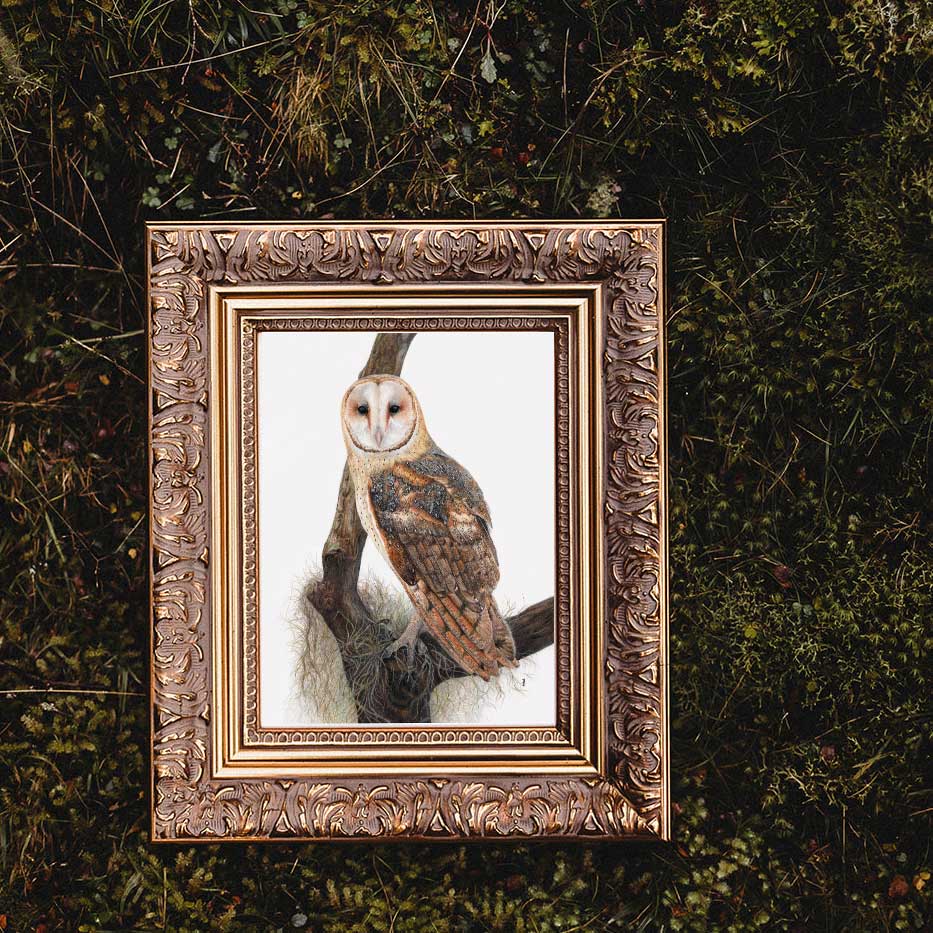
ABOUT NATALIE ESLICK
Natalie Eslick is a full time artist and chief of staff to two kitties, living just north of Sydney, Australia. As a fine artist and creative guide, Natalie is deeply connected to the process and nurturing of intentional creativity, with a lens of compassion and reciprocity. Natalie primarily uses graphite, coloured pencils, watercolor, and oil paints, and her subjects include wildlife, botanicals and landscapes.
To Natalie, her work is a form of advocacy – she wants to inspire more people to stop and really connect with nature, with their non-human kin, and be humbled by how much beauty is all around us that we forget to see let alone acknowledge in our busy modern lives.
Today, you’ll find Natalie in her little corner of Australia striving to live an intentional life – one brimming with wonder and curiosity and abundant respect and reverence for nature and our non-human kin.
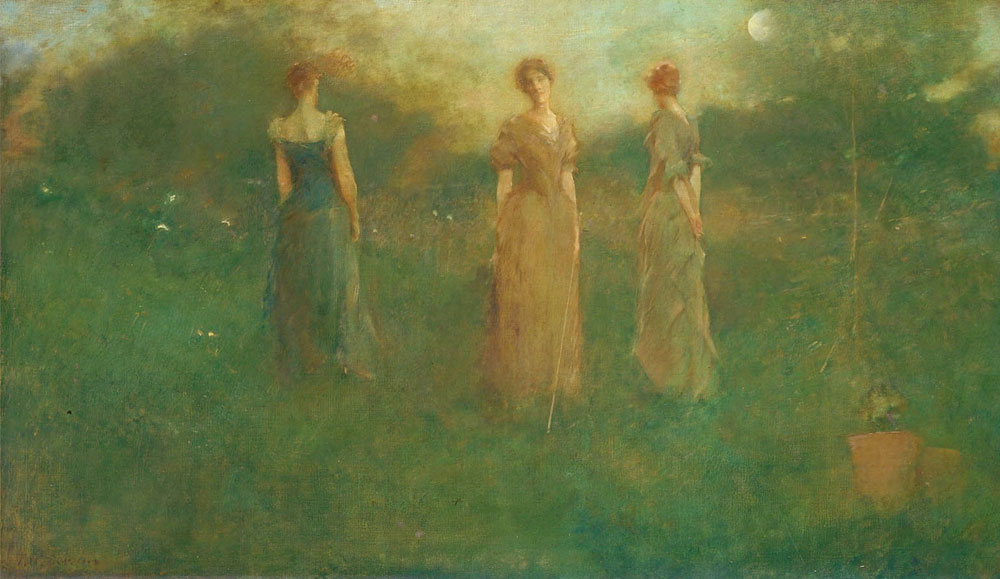
Color Palette of the Month
This month, I couldn’t help but be inspired by our master artist, Thomas Wilmer Dewing. His atmospheric paintings of figures in emerald landscapes have completely enchanted me. I love his blurred edges as though the female figures are one with the green land. That and the fact that we are approaching the Spring Equinox brought me to a verdant color palette. Rich greens of every kind are welcome. Golden edges and sparkling light speak to the pale sunlight through new leaves. New life abounds. I feel wrapped in these green and golden hues for a month of creative renewal.
As always, work with colors that call to you and never doubt your creative intuition. Your colors of renewal may look entirely different and that’s ok.

“Green is the prime color of the world, and that from which its loveliness arises.”
– Pedro Calderon de la Barca
Color Palette
Master Artist Guide
Thomas Wilmer Dewing
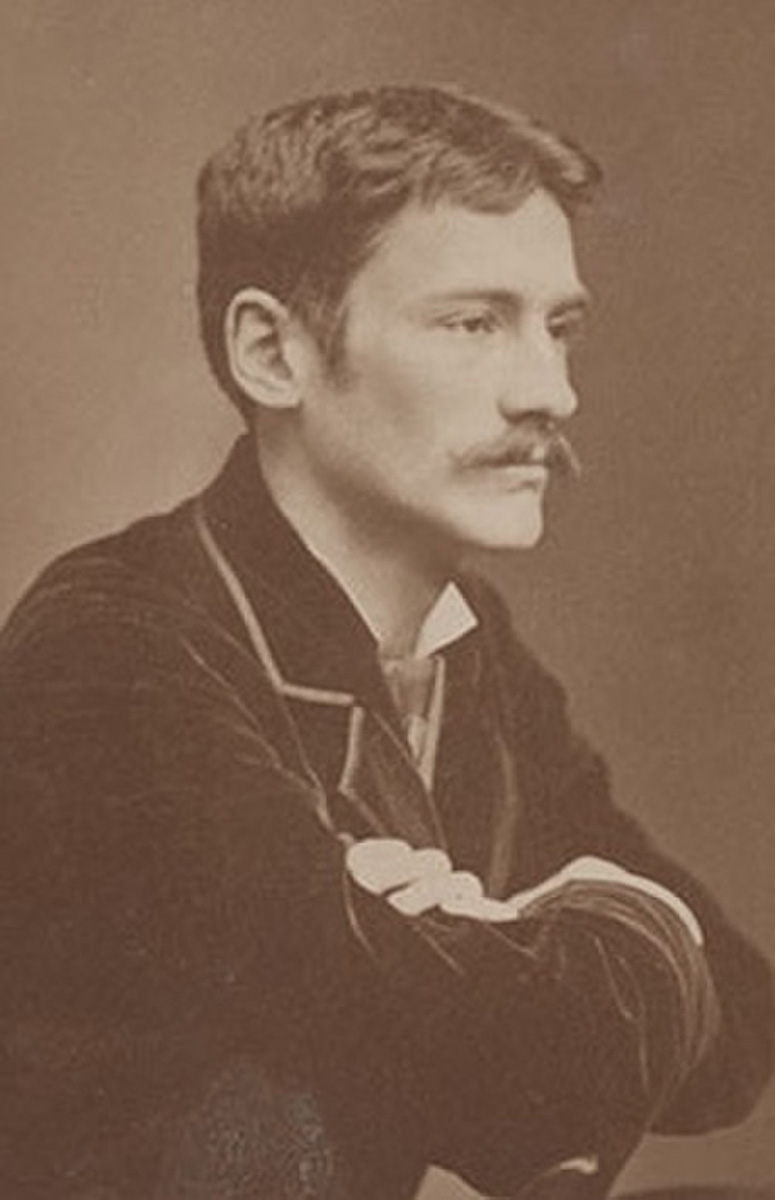
This month, I’m so very excited to bring you the work and story of Thomas Wilmer Dewing. He is brand new to me and I’m totally in love with his work. There is this gentle beauty in his pieces that speak to the gentle emerging of Spring and the renewal that can be found in Nature. I’m especially fond of his green figurative landscapes and pastel works on toned paper. I appreciate his delicate use of value and structured but flowing compositions. So join me and let’s learn more about this amazing master artist…
OVERVIEW
Thomas Wilmer Dewing was born on May 4th, 1851 and passed on November 5th, 1938. He was an American painter working at the turn of the 20th century. Schooled in Paris, Dewing was noted for his figure paintings of aristocratic women. He was a founding member of the Ten American Painters and taught at the Art Students League of New York. The Freer Gallery of Art at the Smithsonian Institution has a collection of his works.He was the husband of fellow artist Maria Oakey Dewing, who was known for her paintings of flowers.
Personal life and education
Thomas was born in Boston, Massachusetts to parents Sophronia Durant and Paul Dewing, and served as a lithographic apprentice until at least 1870 when he was 19 years old. He later studied at the Académie Julian in Paris with Gustave Boulanger and Jules Lefebvre beginning in 1876. There he learned an academic technique; the careful delineation of form and meticulous but subtle texture were to be constant features of his work.
In 1880, he moved to New York where he met and married Maria Oakey Dewing, an accomplished painter with extensive formal art training and familial links with the art world. They had a son who died while an infant. In 1885, their daughter Elizabeth was born. The Dewings spent their summers at the Cornish Art Colony in New Hampshire from 1885 to 1905. These years may not have been as peaceful as they seemed, however. Thomas lost both of his surviving siblings, Paul F. and Louise within a month of each other in 1903.
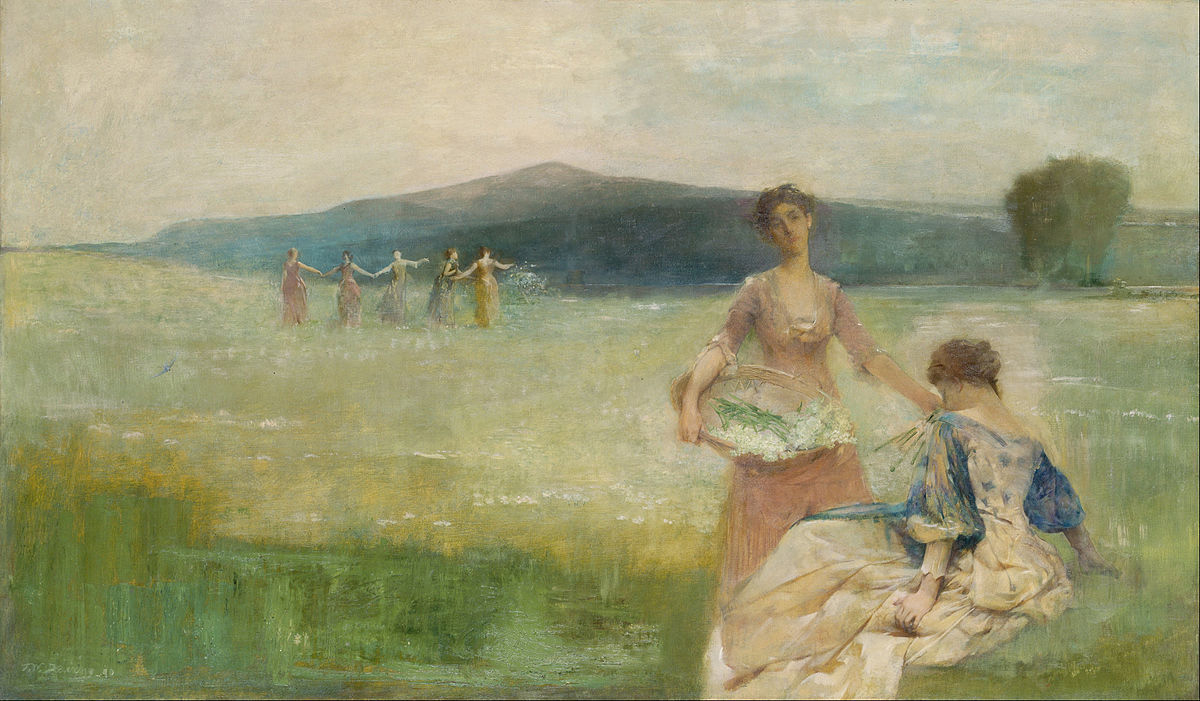
Spring, 1890
Career
Upon his return to the United States from France in 1878, Dewing returned to Boston. The following year he painted Morning, a composition of two women dressed in Renaissance gowns, which is said by biographer Ross C. Anderson to have the quality of Pre-Raphaelite paintings and emotion of a James McNeill Whistler work. He began teaching at the Art Students League of New York in 1881, the same year he married Maria Oakley.
He is best known for his tonalist paintings, a genre of American art that was rooted in English Aestheticism. Dewing’s preferred vehicle of artistic expression is the refined, aristocratic female figure situated in a moody and dreamlike surrounding. Often seated playing instruments, writing letters, or simply communicating with one another, Dewing’s sensitively portrayed figures have a detachment from the viewer that keeps the spectator a remote witness to the scene rather than a participant.
By the late 1880s Dewing had formed his basic style and subject matter–elegant, refined women portrayed with an extremely limited range of colors and placed in sparse interiors or outdoors in soft green fields. He drew inspiration from the paintings of the Dutch artist Vermeer and from the aesthetics of James A. M. Whistler and the English artist Albert Moore. His brushwork became increasingly soft and blurred.
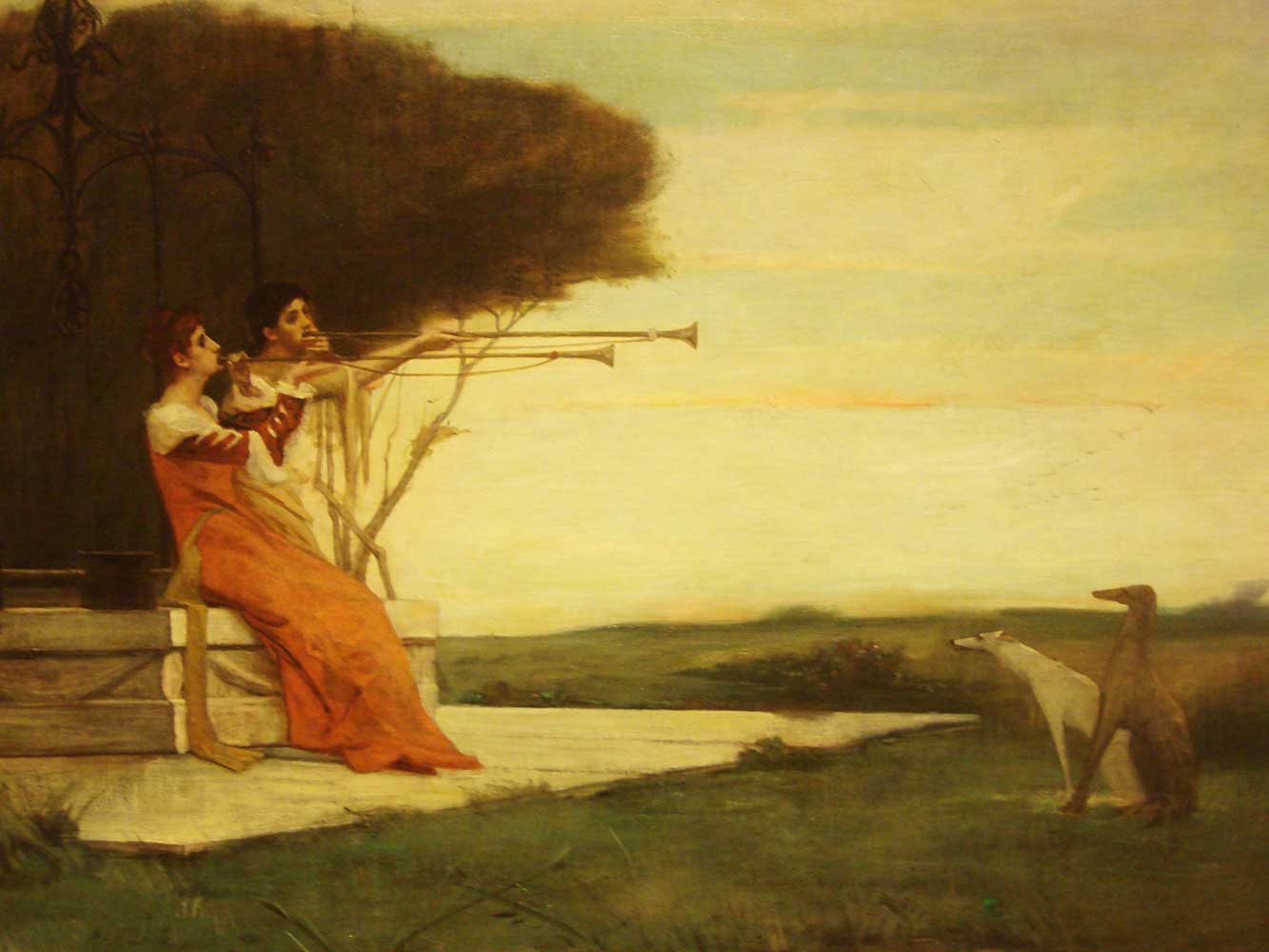
Morning, 1879
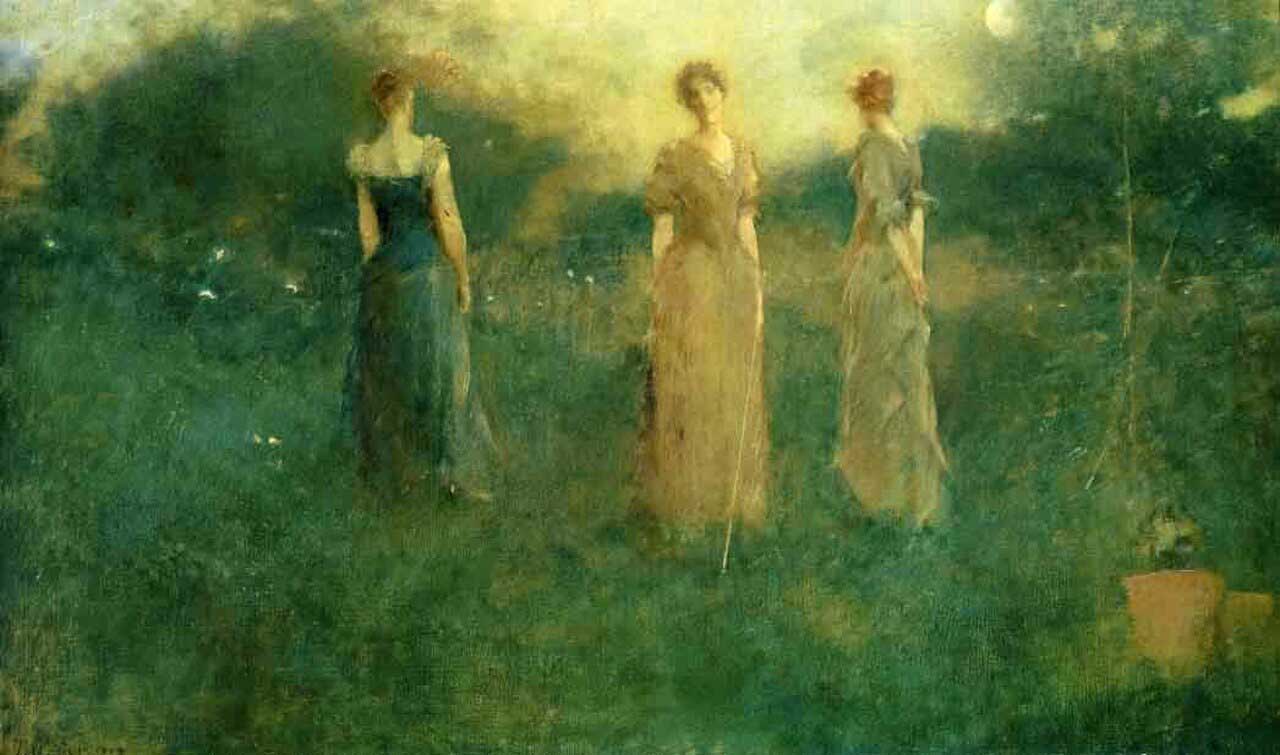
In the Garden, 1892-1894
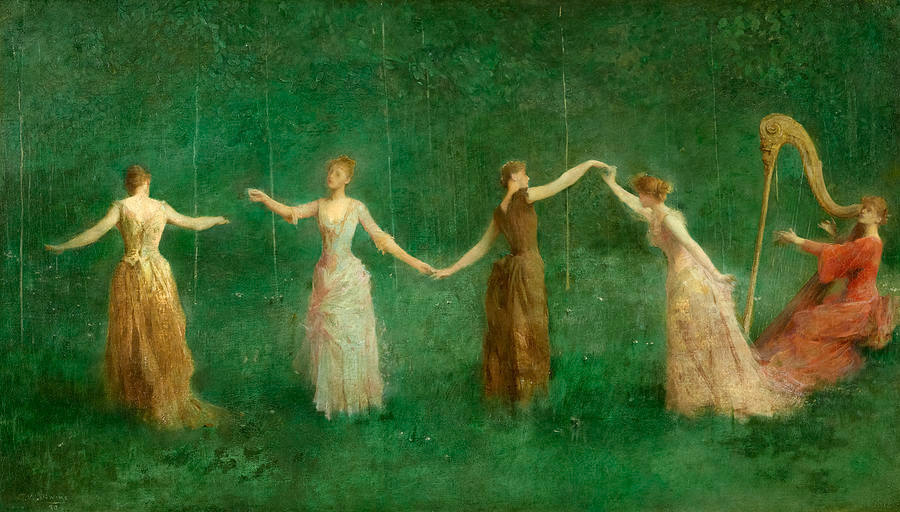
Summer, 1890
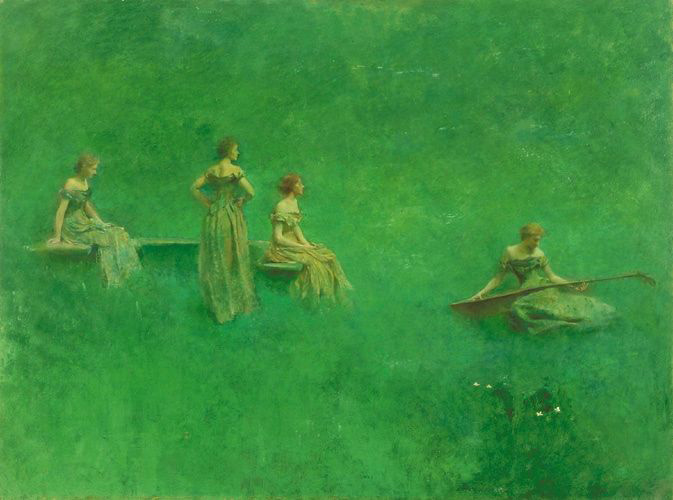
The Lute, 1904
The timeless nature of Dewing’s landscapes stands in sharp contrast to the ever-increasing pace of modern life in New England. Verdant, mysterious, and dreamlike, Dewing’s paintings provided fixed points of truth and beauty for a turn-of-the-century generation fearing the great changes in American culture wrought by immigration, industrialization, and urbanization.
He was elected into the National Academy of Design in 1888. Dewing was a founding member of the Ten American Painters in 1898, a group of artists who seceded from the Society of American Artists in 1897. He joined the Society of Landscape Painters, founded in 1899, where he was more aligned with other Tonalist artists. Among his awards were medals at the Paris Exhibition (1889), at Chicago (1893), at Buffalo (1901) and at St Louis (1904).
Later years
He did not paint much after 1920 and lived out his later years in his Cornish, New Hampshire, home. His wife died in 1927 in New York City and Dewing died in New York in 1938.
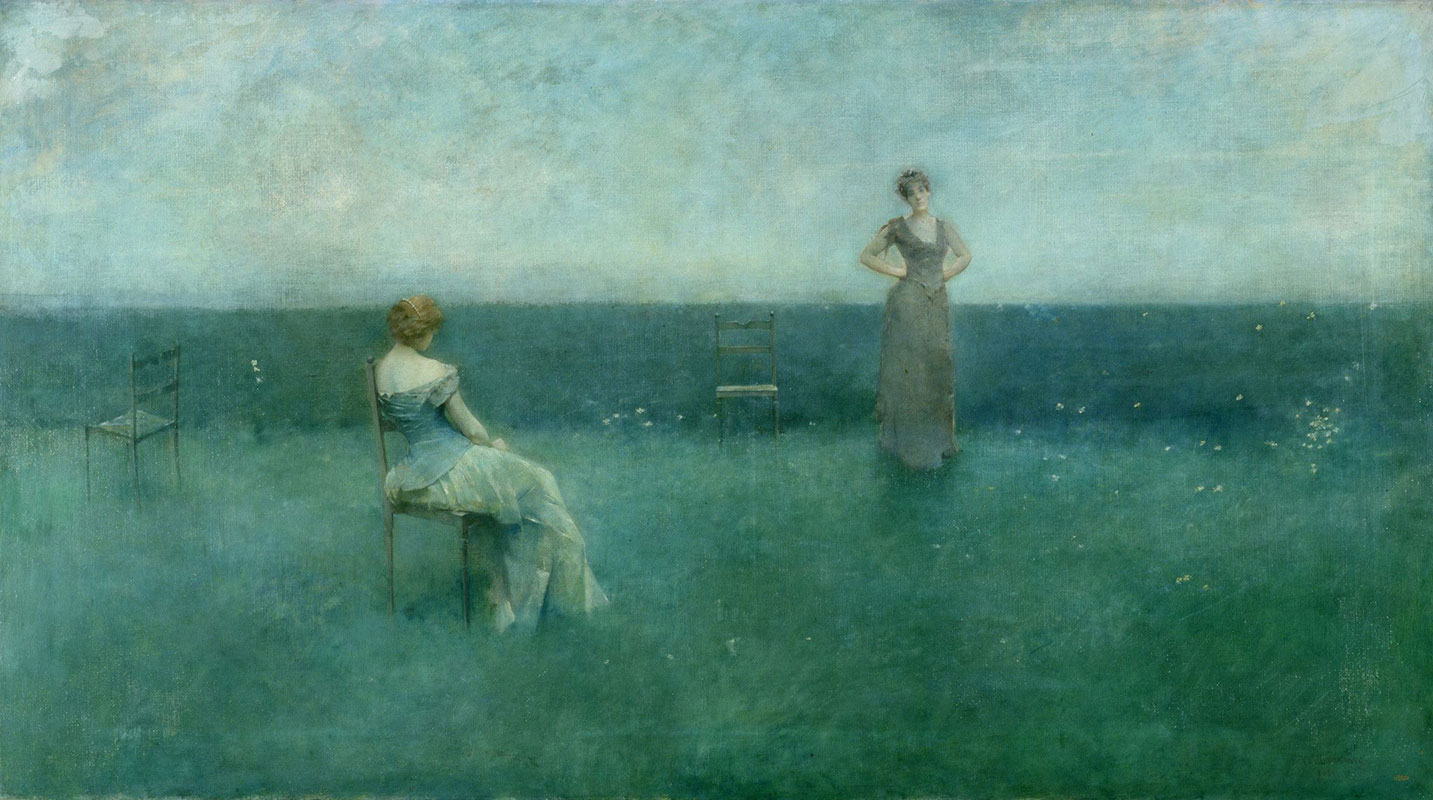
The Recitation, 1891
What is Tonalism?
As previously mentioned, Dewing was considered part of the Tonalist movement. Art historians use the term Tonalism to describe an American artistic movement spanning from about 1880 to approximately 1920. More generally, the term (tonalism, tonalist, or tonalistic) describes a style of painting in which color range is limited so that subtle gradations of the middle values (aka color “tones”) constitute the primary aesthetic and means of expression. The use of a limited value range produces a softer, poetic look to the piece, almost dreamlike in appearance. You can see this throughout Dewing’s paintings.
To read further on Tonalism I highly recommend this excellent articles…
Enjoy this slideshow of his work
Here’s a Pinterest board full of work from Thomas Wilmer Dewing:
“It is not our job to remain whole. / We came to lose our leaves / Like the trees, and be born again, / Drawing up from the great roots.”
– Robert Bly
Master Artist Guide
Sketchbook Explorations
EXPLORATION 1
Inspired by Thomas Wilmer Dewing
Create a master study or a piece inspired by Thomas Wilmer Dewing. I was so enchanted by his rich green landscapes that I couldn’t resist doing a study of one of his works. I used oils to create my study. You will see the entire process in a bonus lesson from me this month! Enjoy!
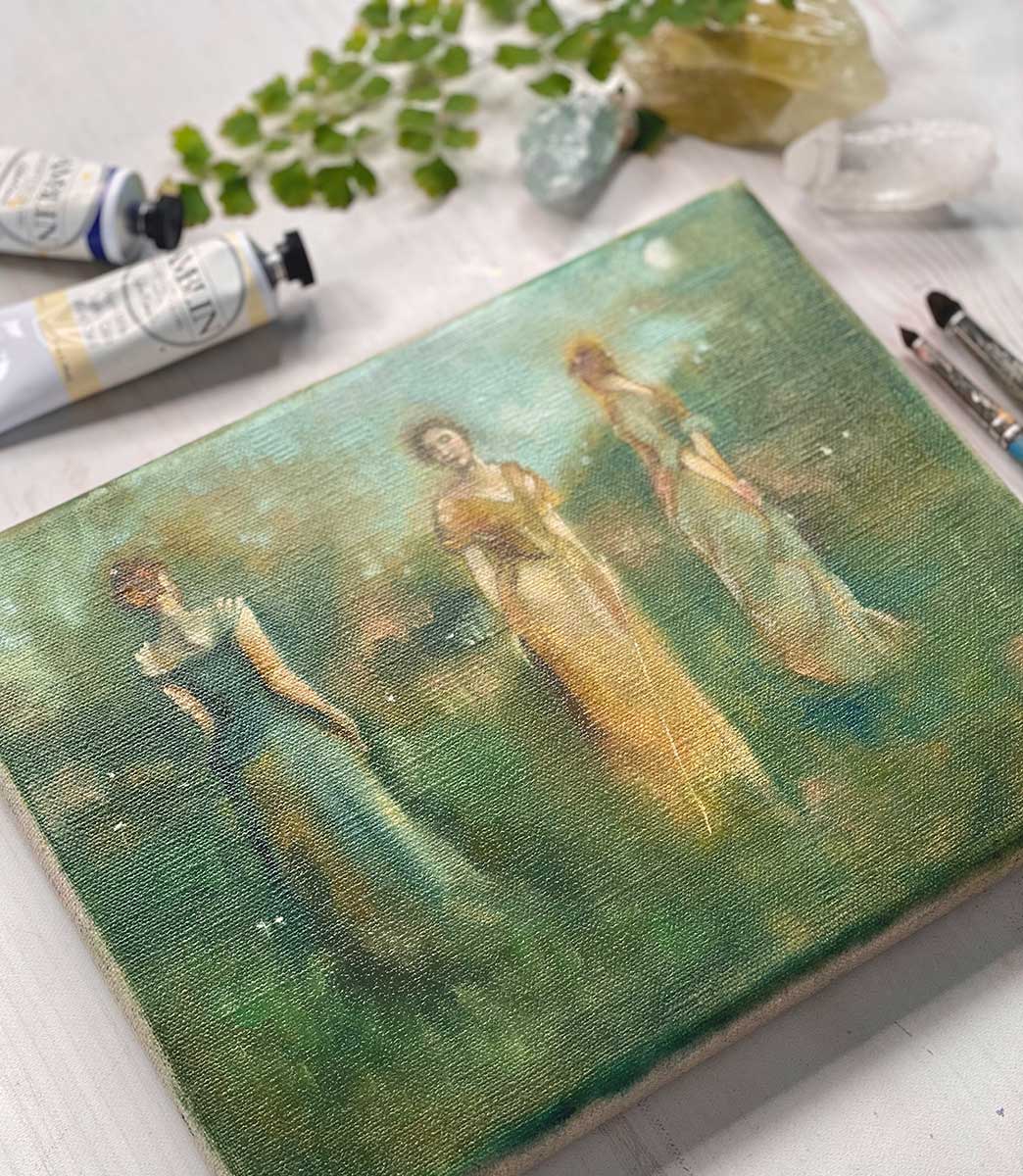
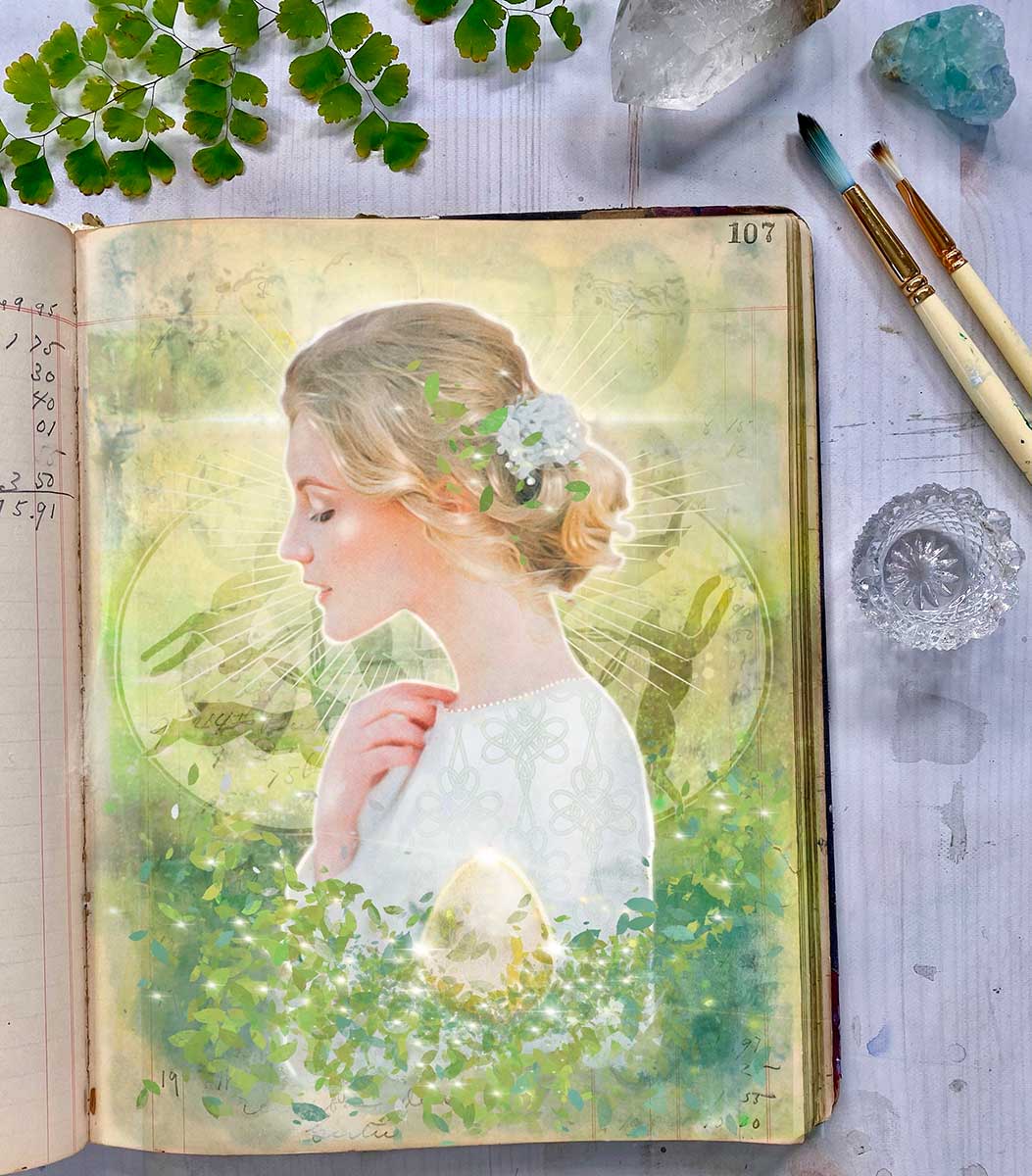
EXPLORATION 2
Ostara
Using Ostara or if you prefer, Easter, create a page in your journal or a small piece inspired by the celebration of Spring’s arrival. You could focus on the goddess or something related to this special time of the year!
EXPLORATION 3
For the love of Green
Since the color green is given all the love this month, this is a great opportunity to practice your color mixing. Grab your primary colors, red, blue and yellow and a white and practice mixing up as many greens as you can! You will notice that by adding red to your green mixtures that it will dull it or make it more earthy. This is because adding a color’s complement will do this…so since red and green are complementary you will achieve more earthy greens by adding a touch of red. Explore what happens when you use a warm yellow (like yellow ochre) and mix into a cool blue (like phthalo blue). Write down the colors you are using for reference. It’s pretty amazing how many greens you can create with just three colors! If you feel inspired, create a little painting in shades of green!
“Inside myself is a place where I live all alone, and that’s where you renew your springs that never dry up.”
– Pearl S. Buck
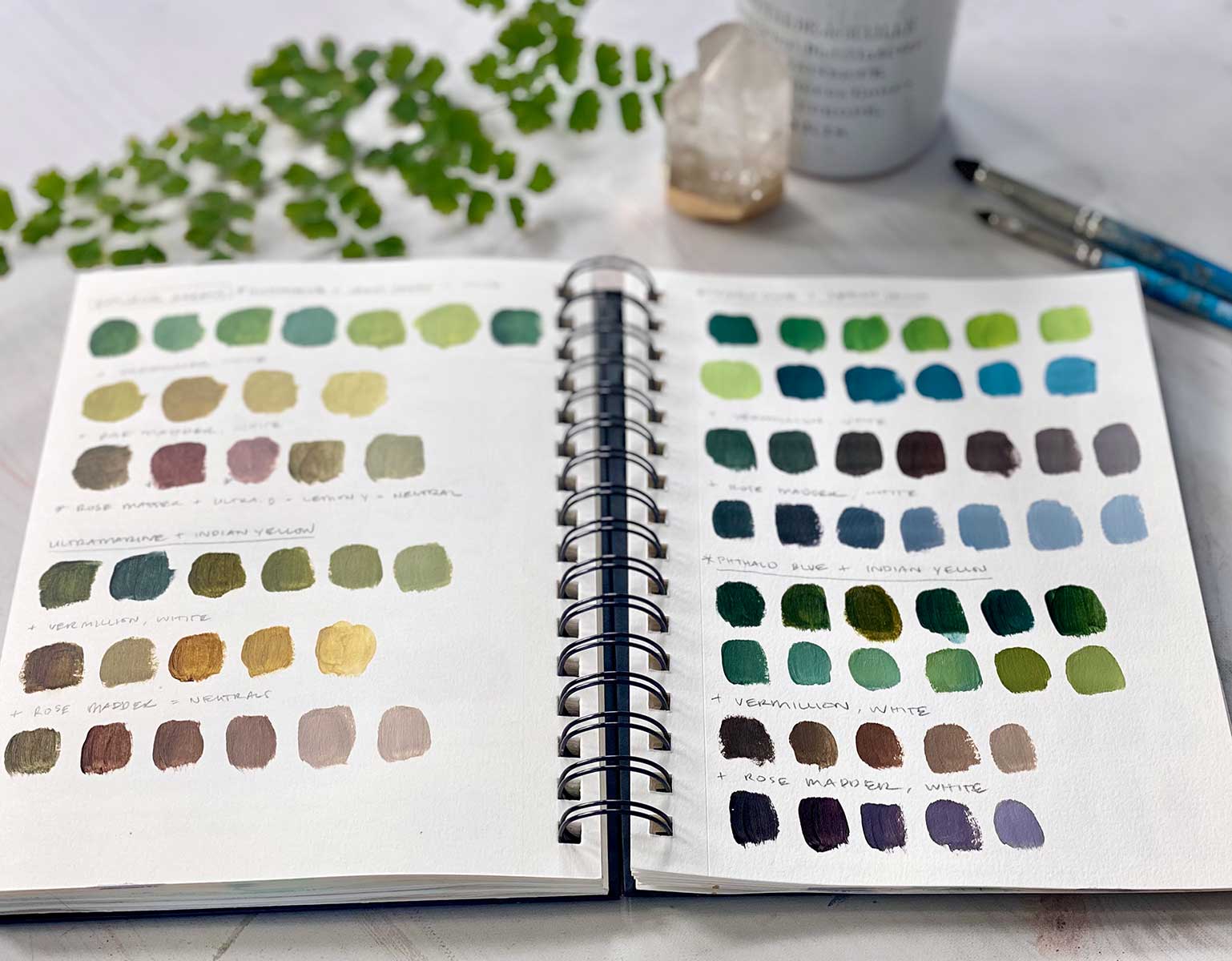
MONTHLY LESSON
with Susan Mccreevy
I’m excited to share a wonderful and unique lesson from one of our Studioworks community members! Susan was game for a challenge so when I asked her to teach a lesson for us she agreed! Susan will be walking us through the beautiful process of creating our very own nature inspired encaustic brooch. Enjoy learning with Susan! I can’t wait to see what you create!
“As artists, we must learn to be self-nourishing. We must become alert enough to consciously replenish our creative resources as we draw on them.”
– Julia Cameron
BONUS MONTHLY LESSON
with Ivy Newport
I couldn’t help but film this process for you since I knew it would be a lot of fun and have lots of teaching moments when mixing up all these beautiful greens! This is also a great exercise in value. As you have probably read, Thomas Wilmer Dewing was considered a tonalist painter, meaning he kept his values very close together to create soft, dream-like paintings.
Have fun and enjoy melting into this field of greens!
“As artists, we must learn to be self-nourishing. We must become alert enough to consciously replenish our creative resources as we draw on them.”
– Julia Cameron
FEATURED Monthly LESSON
From The Studioworks Library
Don’t forget that your Studioworks Membership gives you access to over 100 creative classes from teachers all over the world! Each class has three to four creative lessons! That’s a lot of artsy goodness, right at your fingertips!
Each month, we will highlight just one of these lessons as a sweet invitation for you to explore all that the Studioworks library has to offer. This month, along with our nature theme, we bring you a beautiful lesson from talented teacher, Deanna Marie from her class Inspired by Nature. This sweet lesson will have you out in your garden, mixing up colors and appreciating the Spring blooms that are popping up! Enjoy.
STUDIOWORKS
Submission Calls
If you’d like to be featured in an upcoming Studioworks Journal, we’d love to have you join our Creative Network! Our intention with Studioworks has always been to cultivate community involvement and collaboration. Featuring members from our creative community is such an honor and a beautiful way to share the light you all bring. Come join us!
STUDIOWORKS PODCAST
issue thirty-nine
You can also listen to this month’s issue of the Studioworks journal. I find I love listening to books, podcasts and music while I draw, paint or go on a long walk. Enjoy.
Studioworks : issue thirty-nine

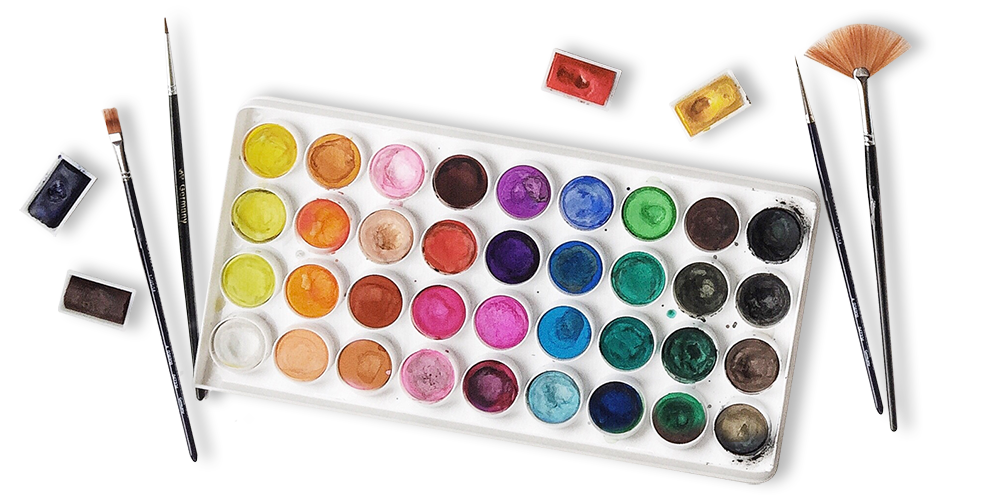
inspiration: curated
Books to Discover & Enjoy
MUSIC PLAYLIST
I had so much fun curating this list. I hope you enjoy!!
THINGS TO WATCH
PINTEREST BOARD
JUST ADDED TO YOUR STUDIOWORKS LIBRARY
Here are just a few of our fantastic new classes! I highly recommend checking them out if you haven’t already. Enjoy!

© 2019 IVYNEWPORT, LLC ALL RIGHTS RESERVED.

